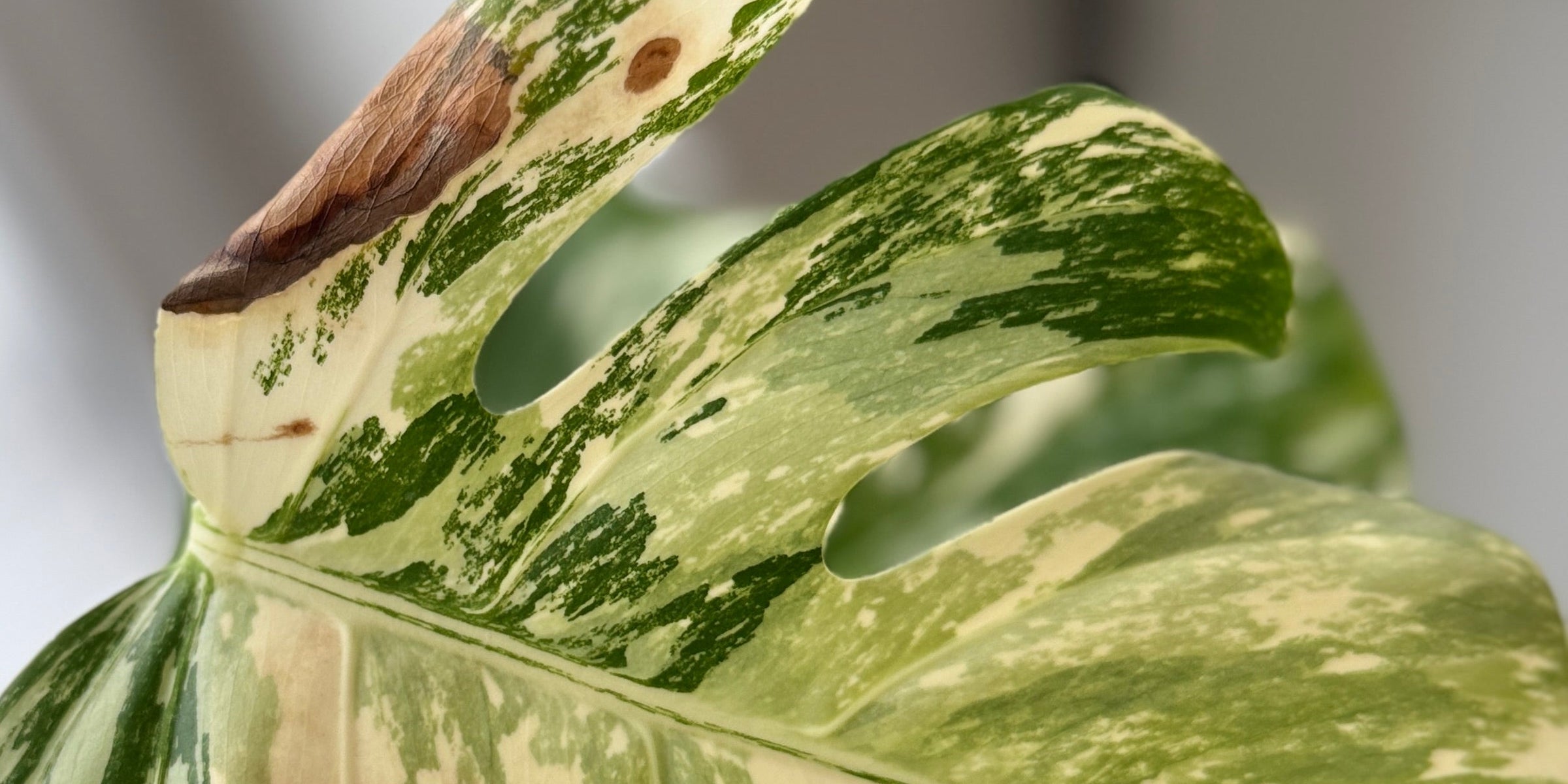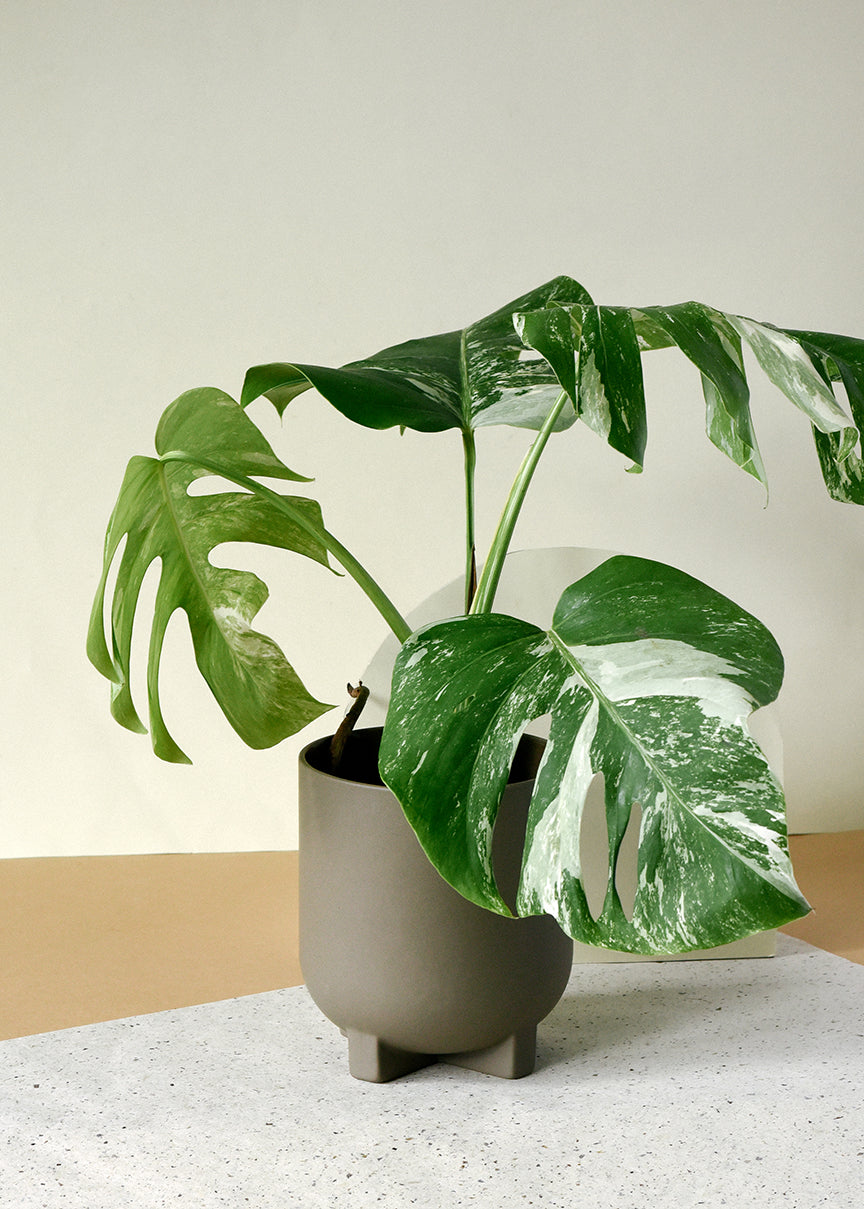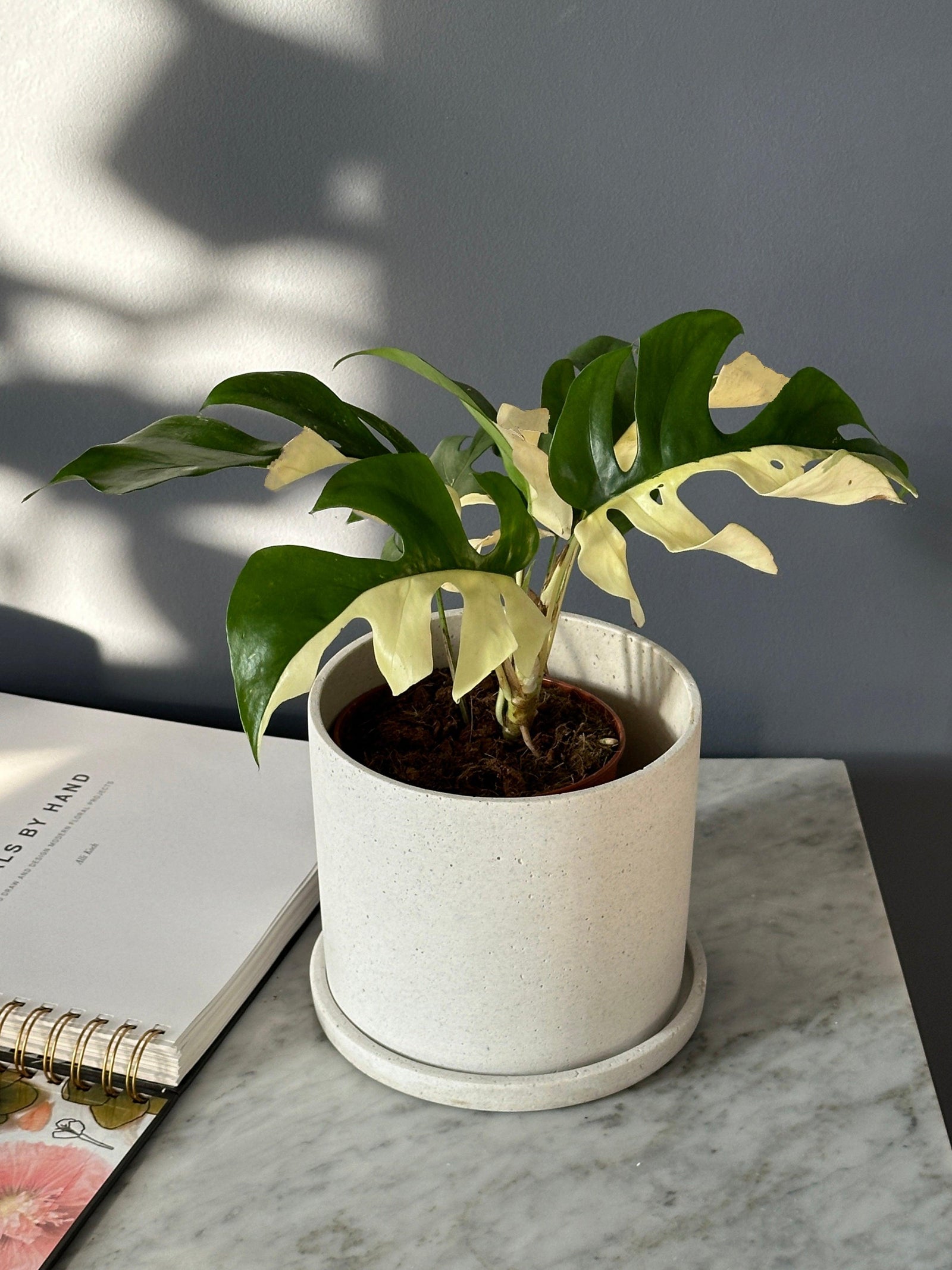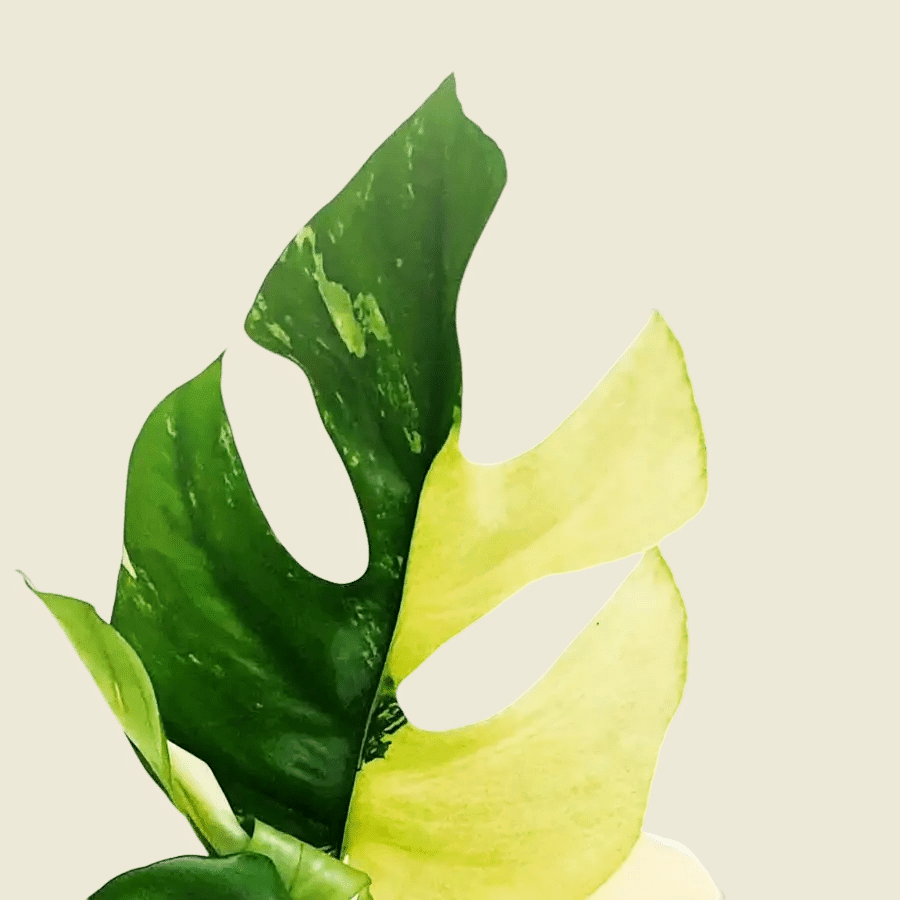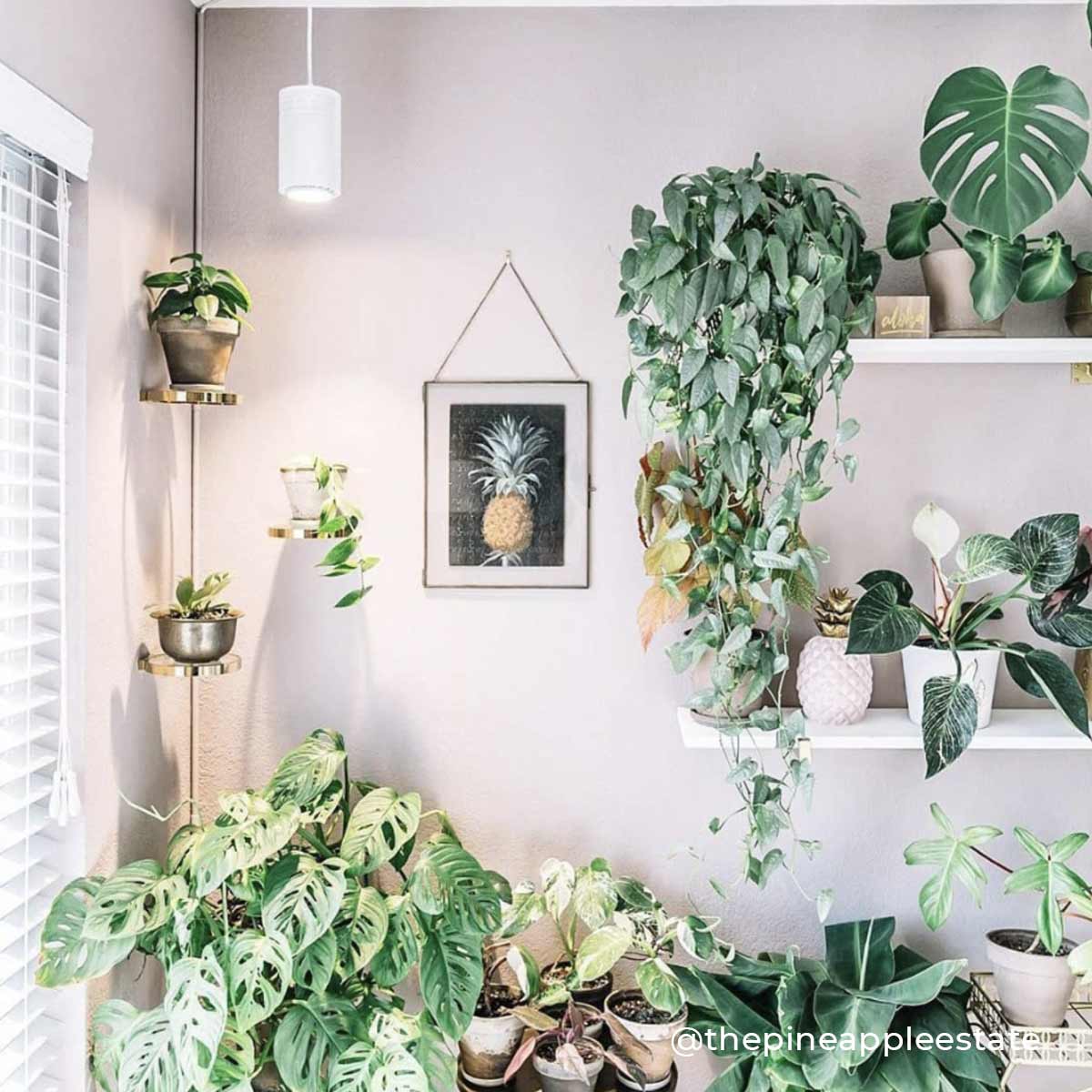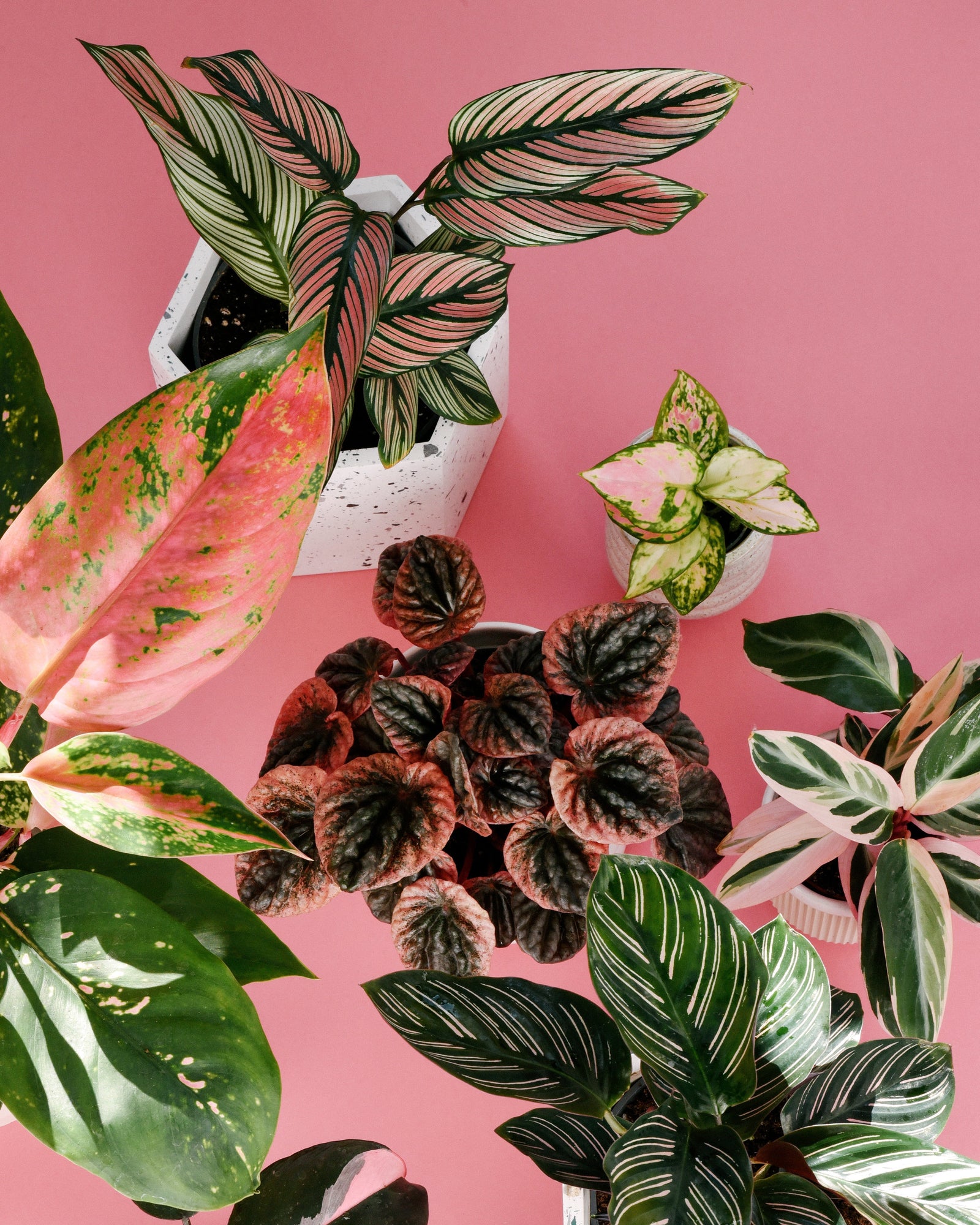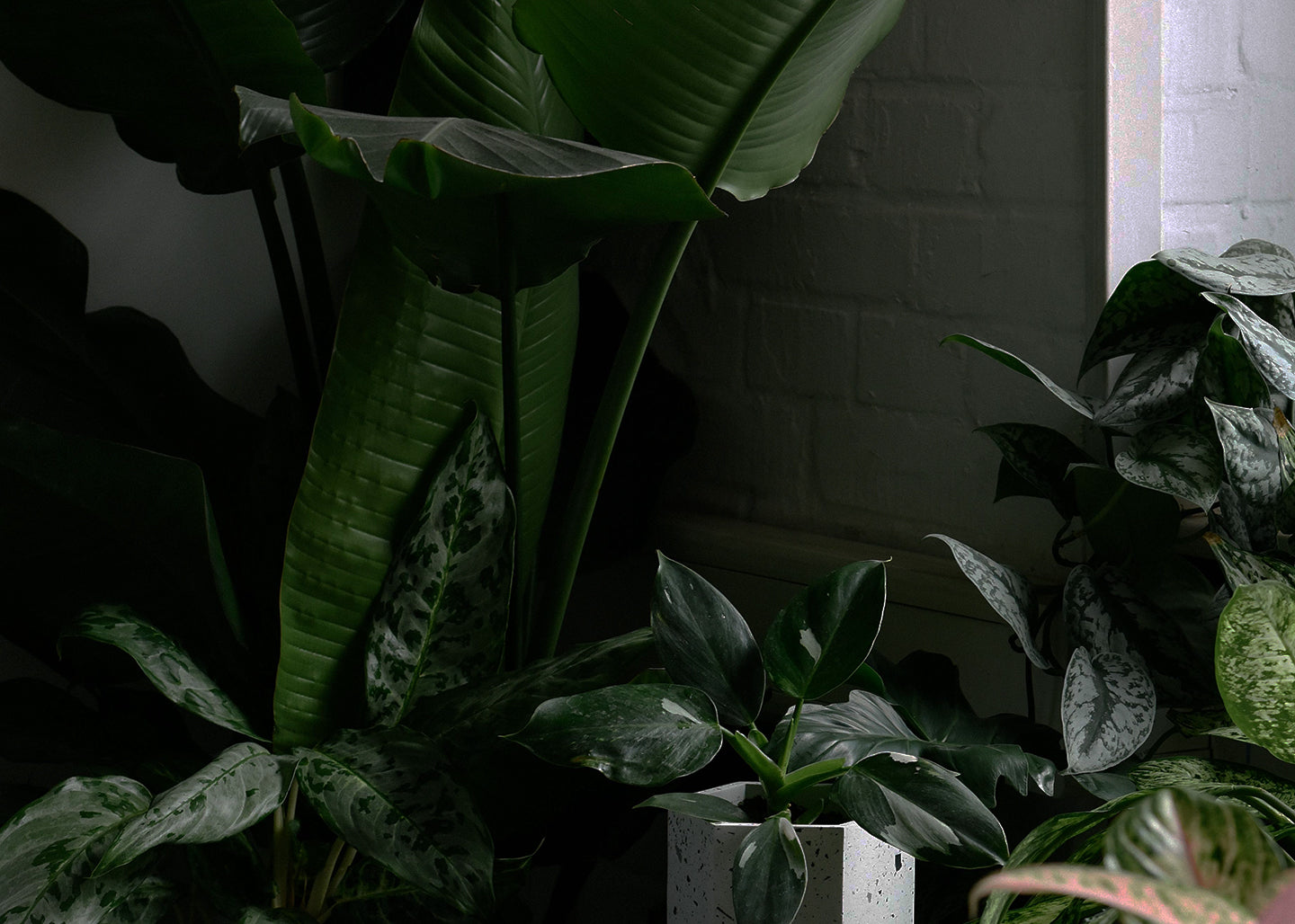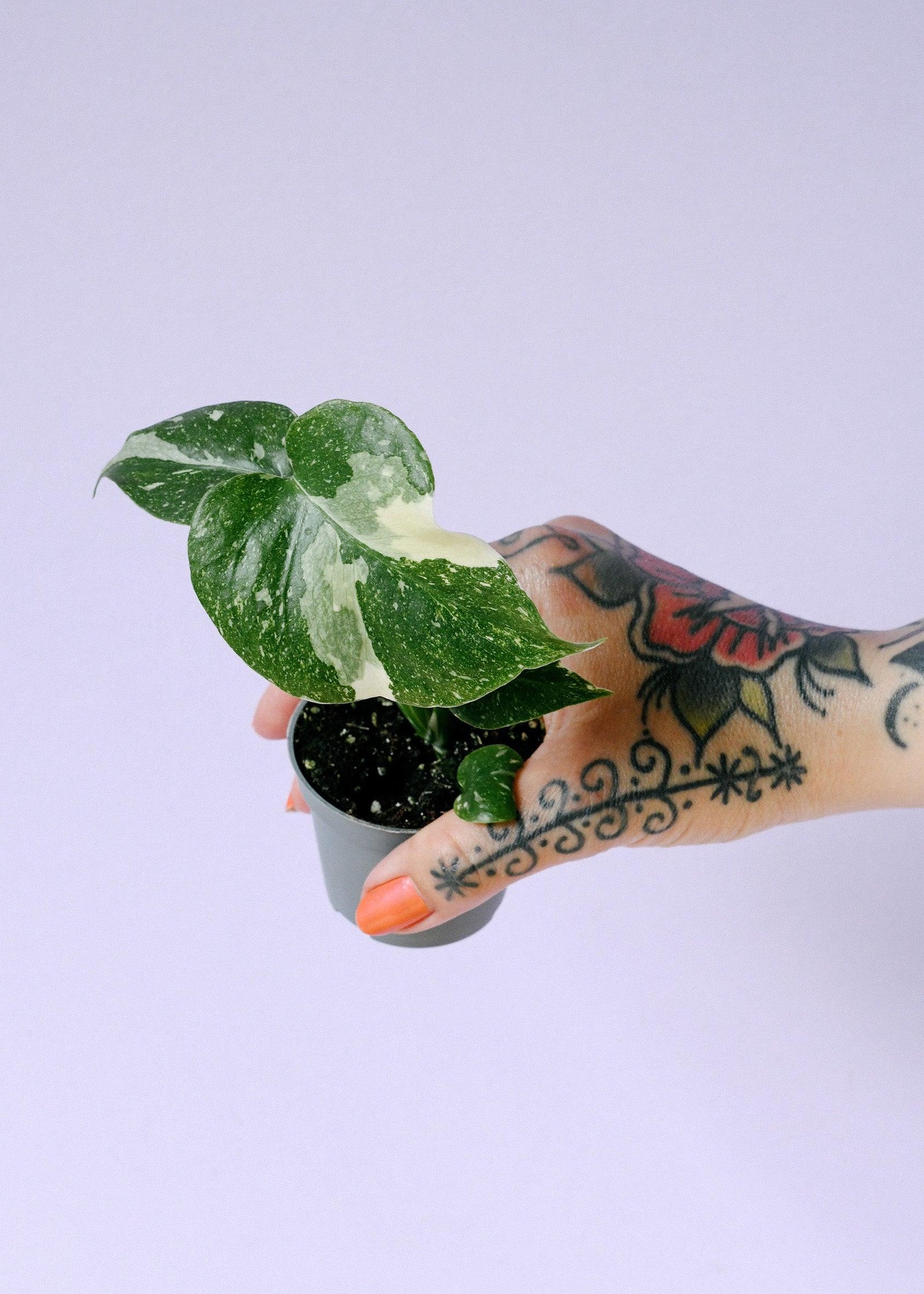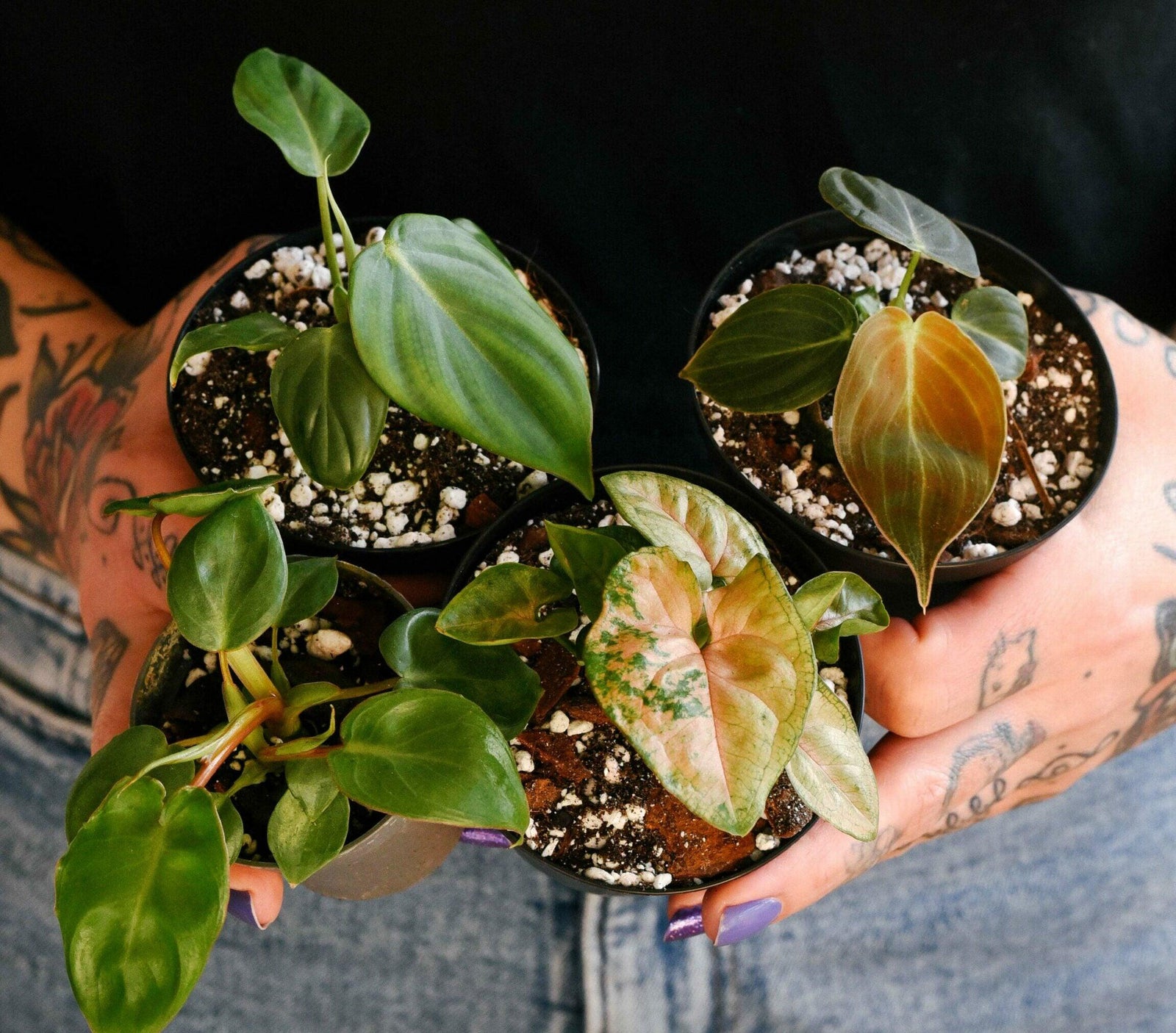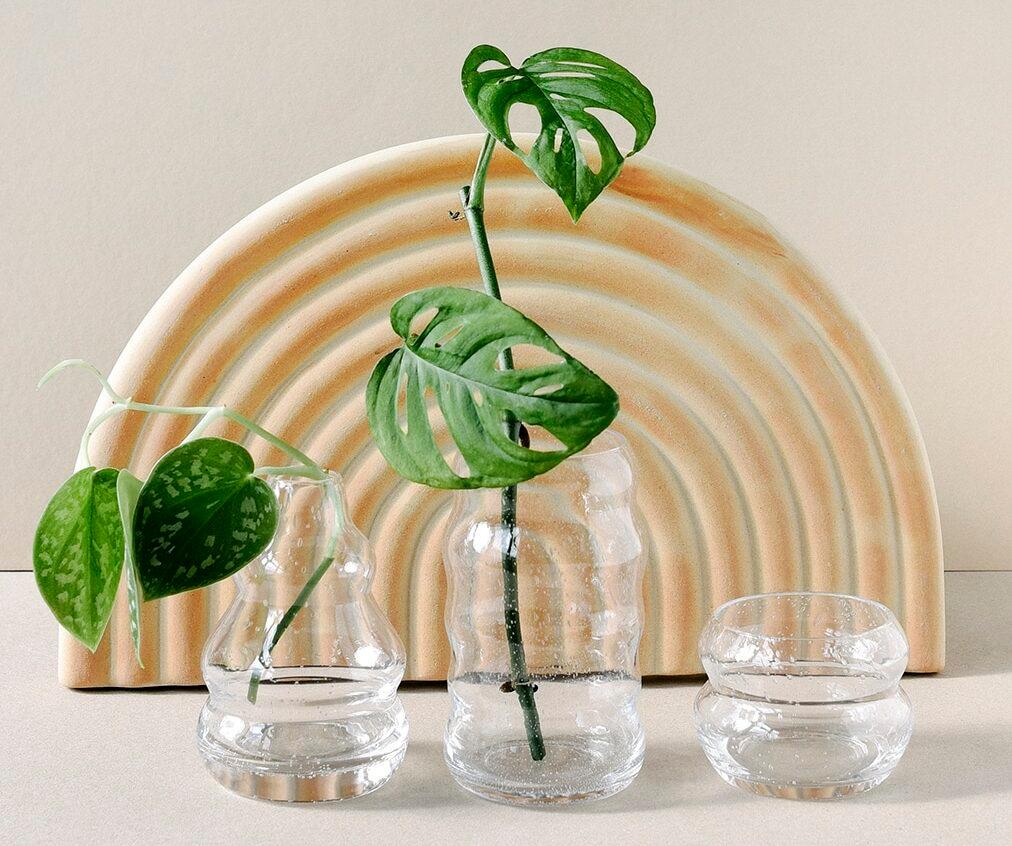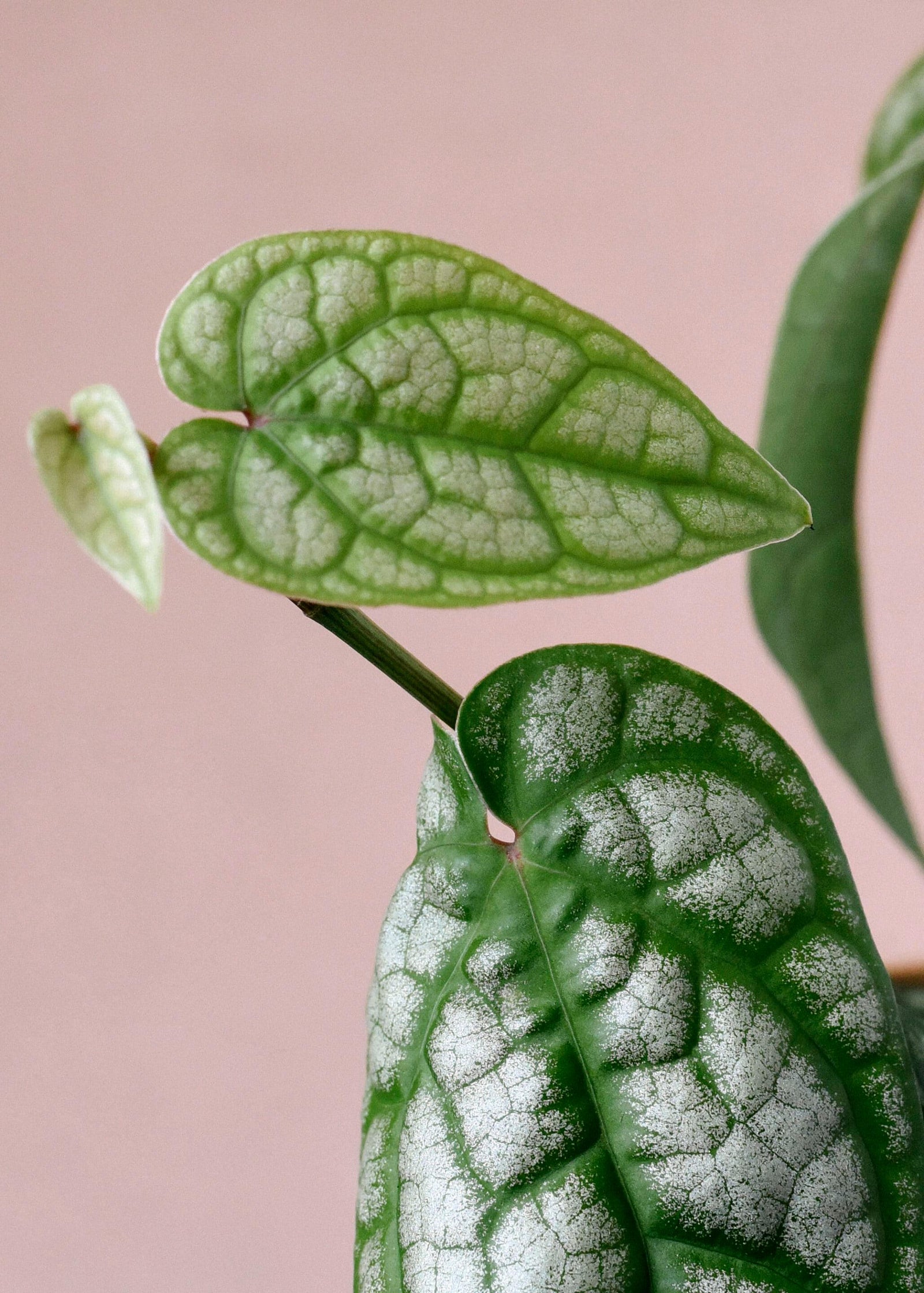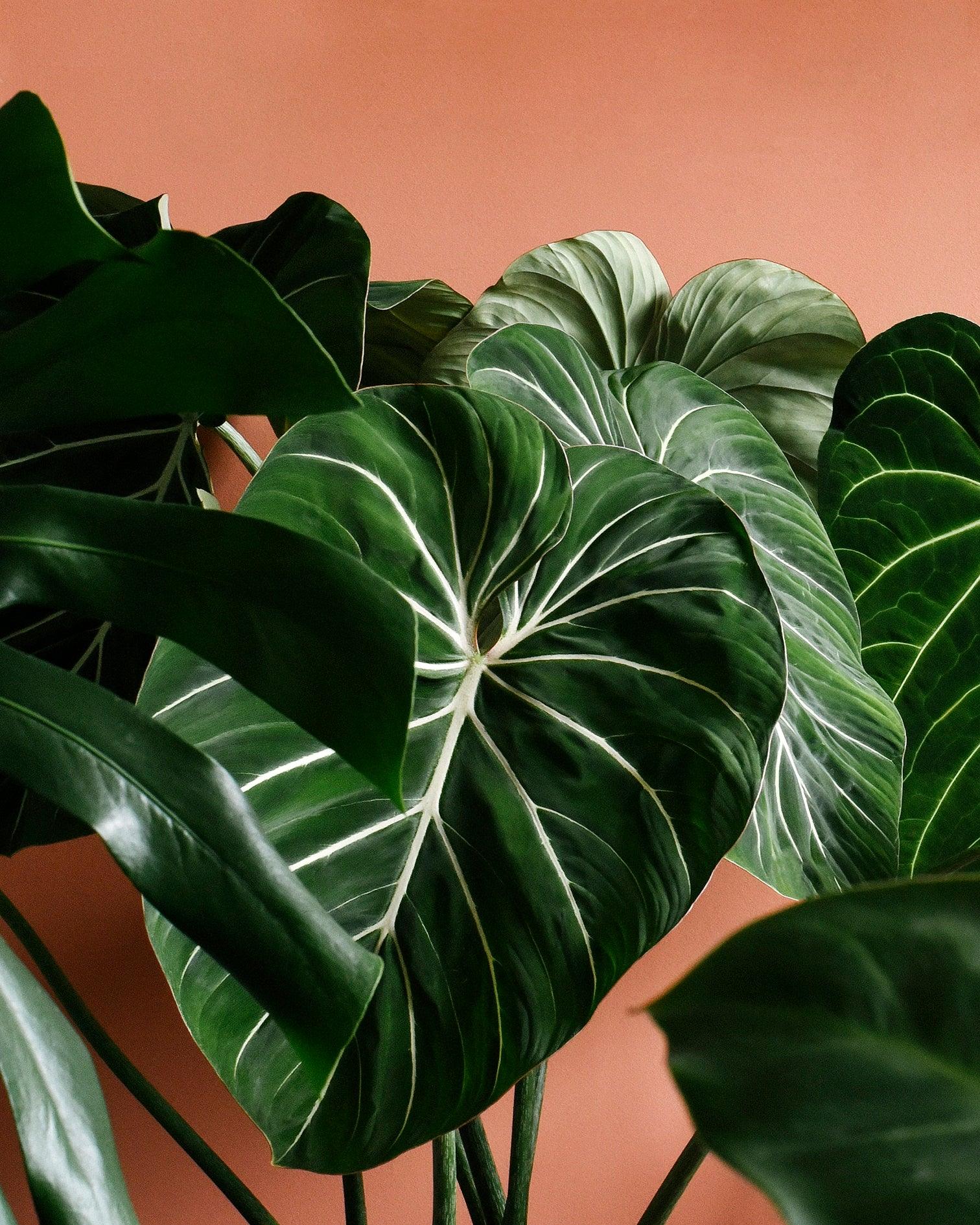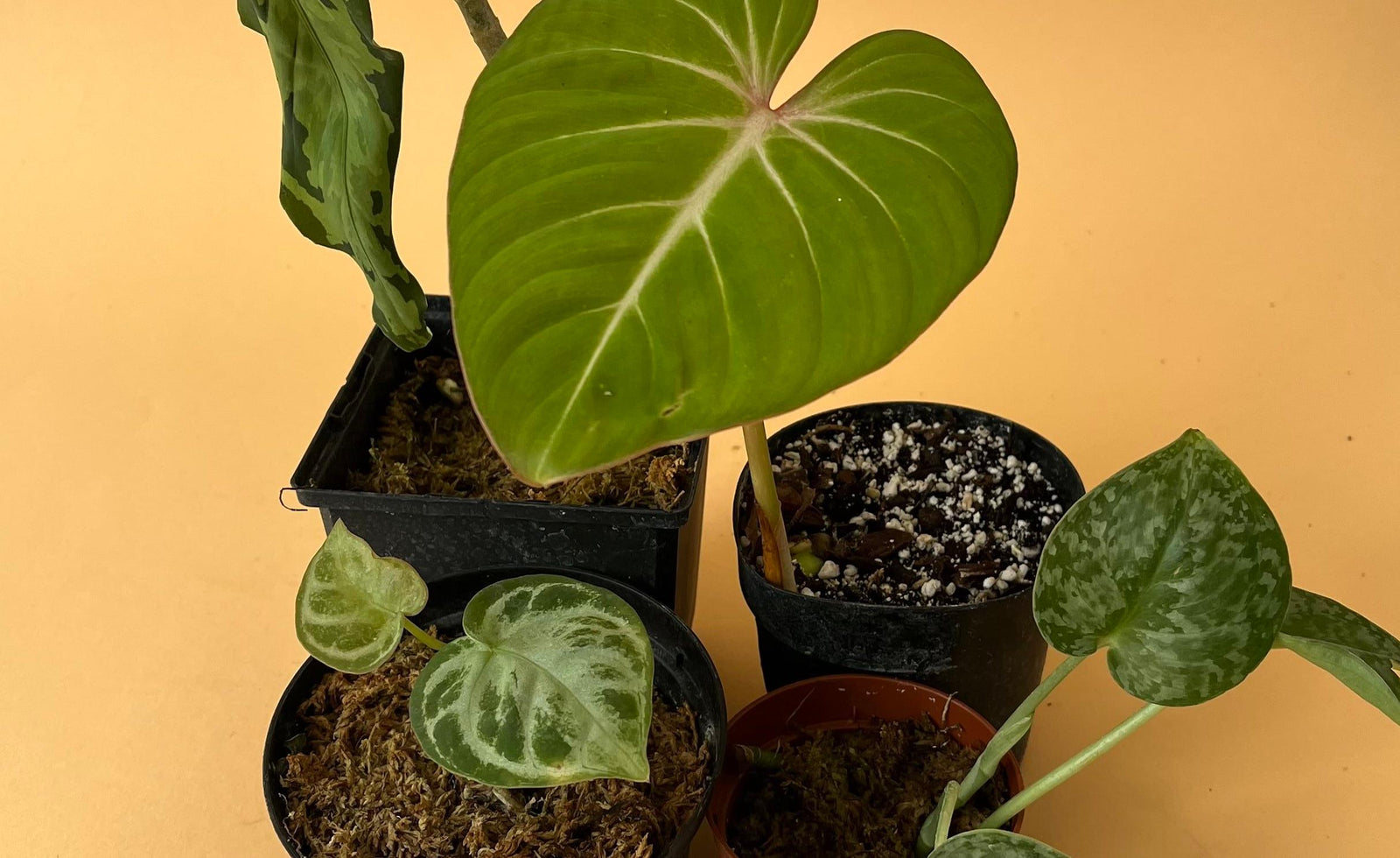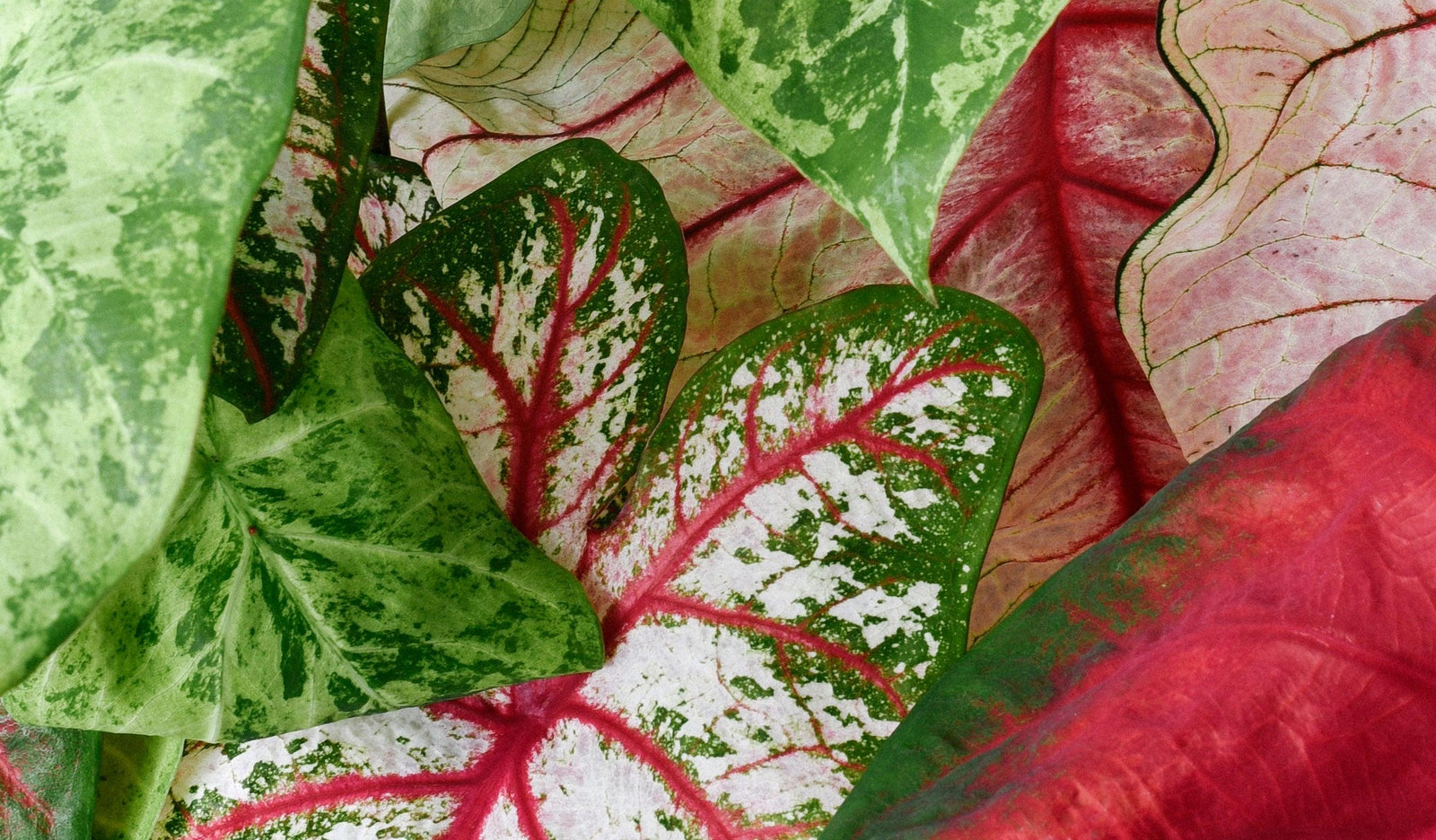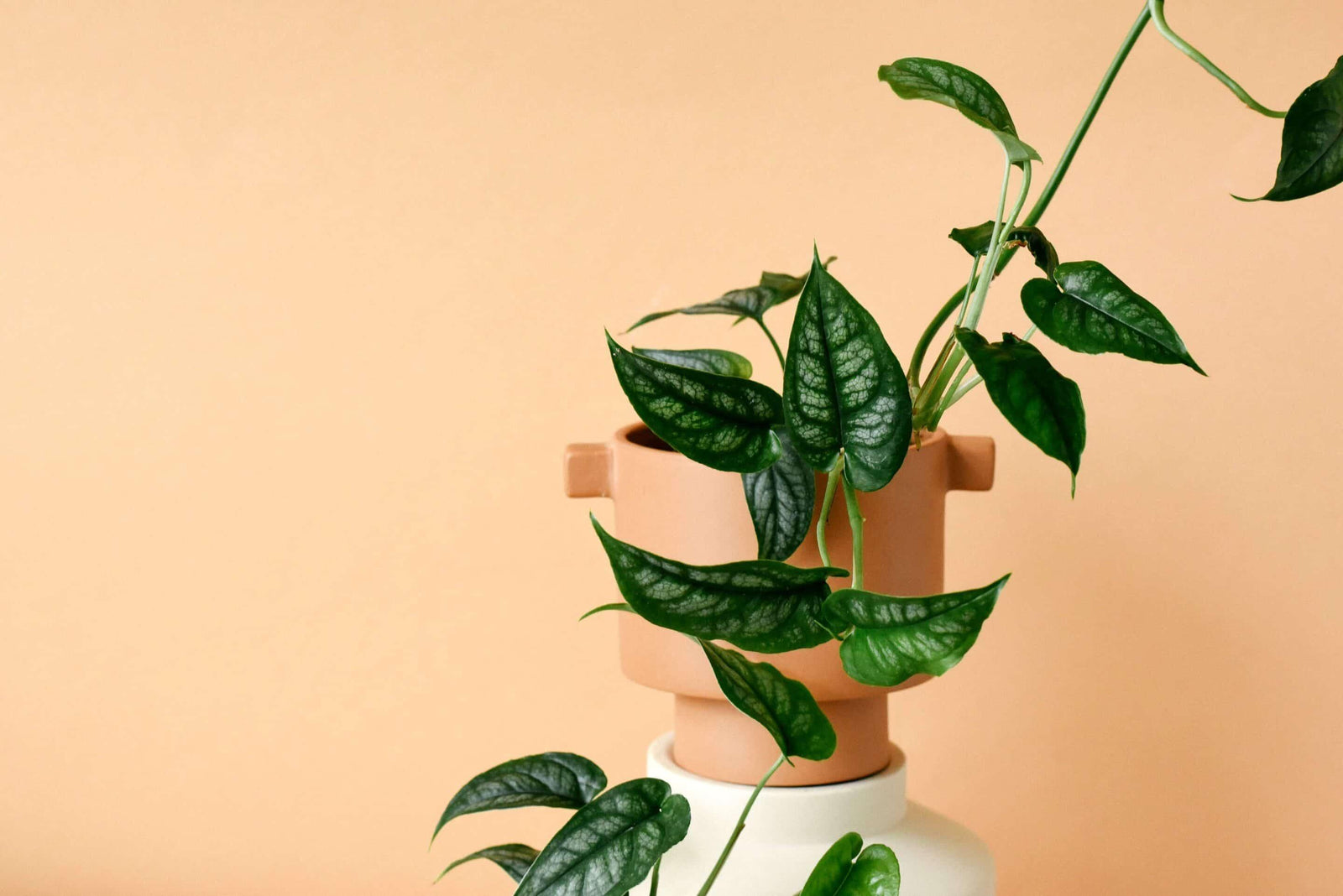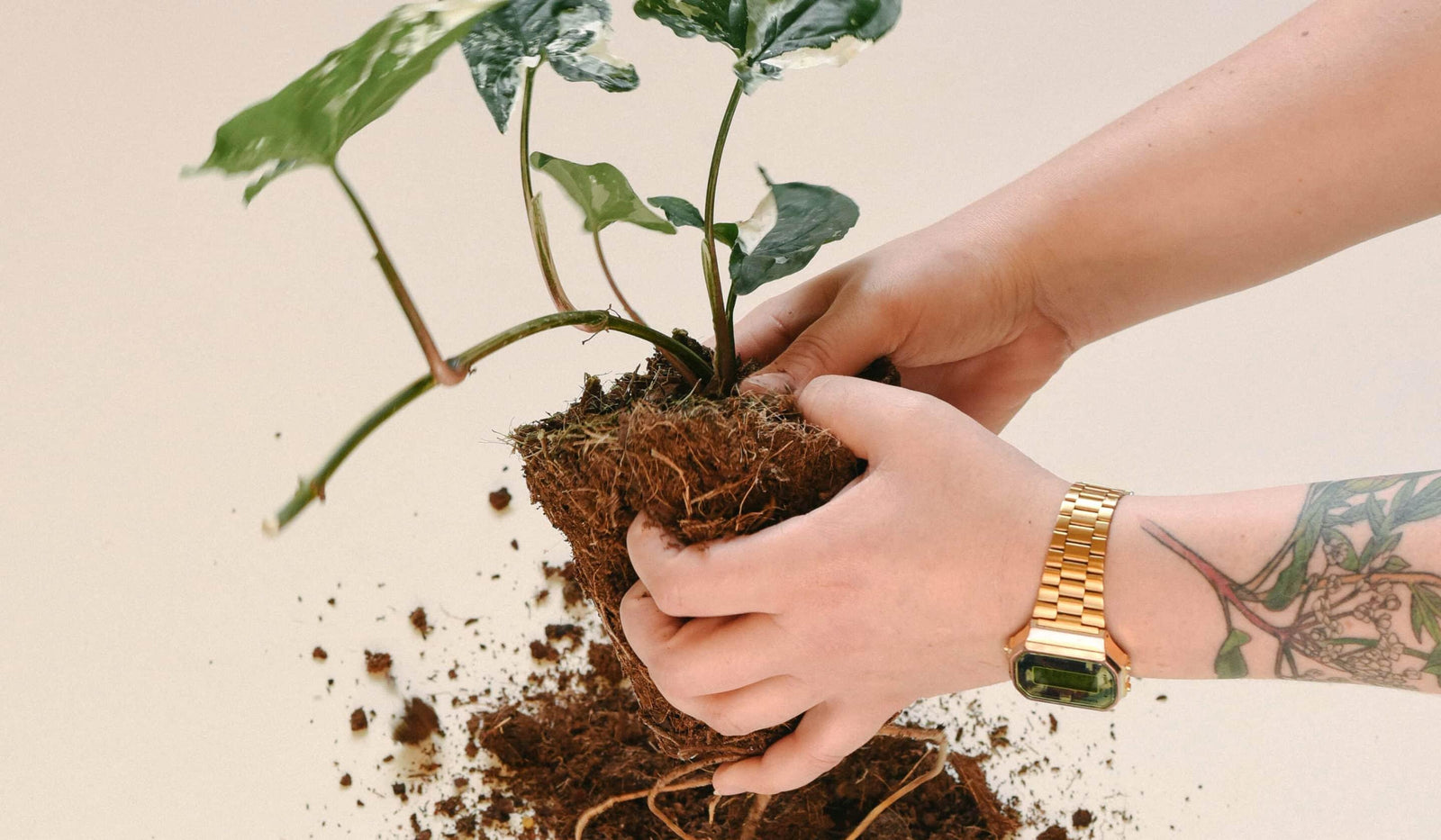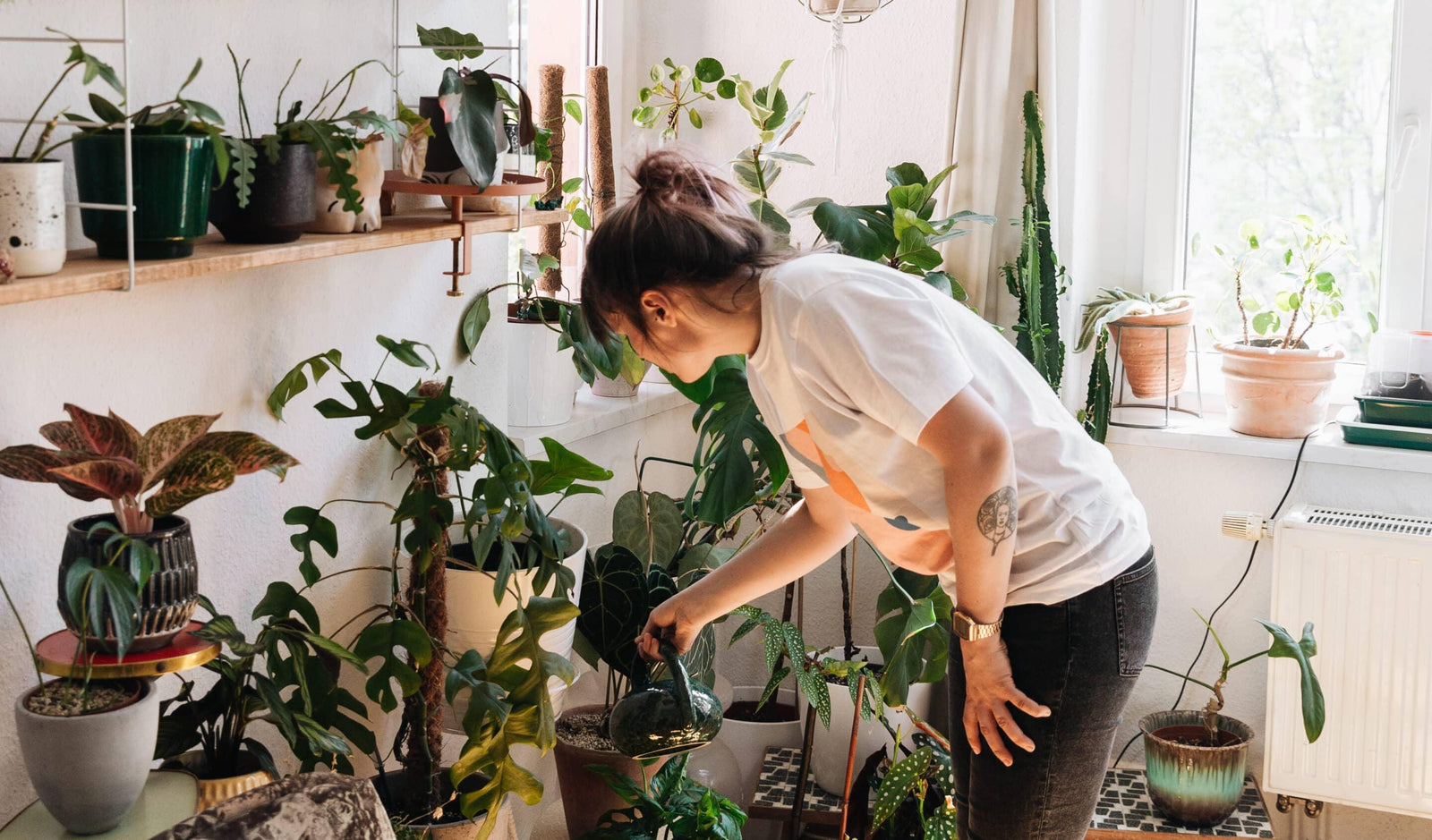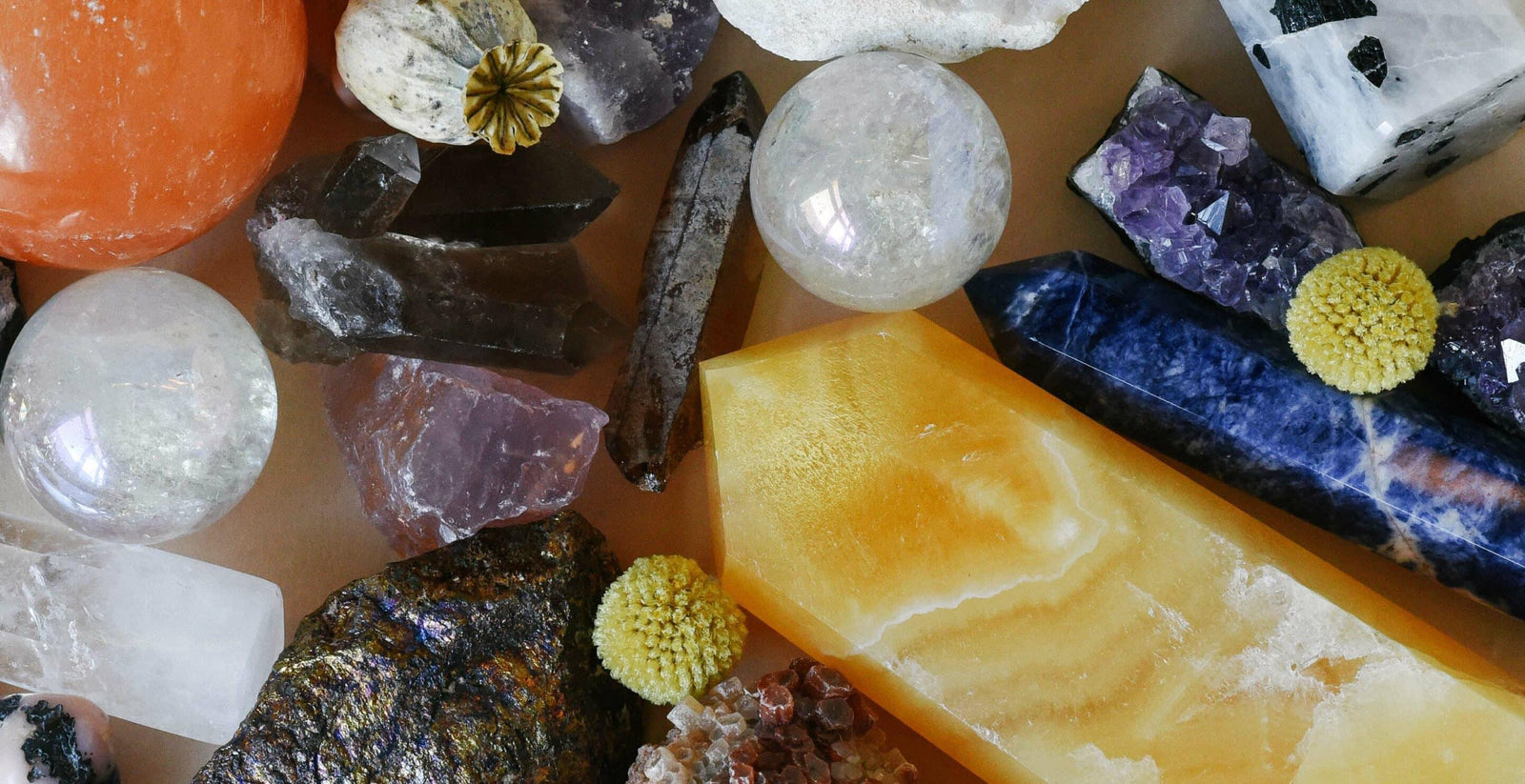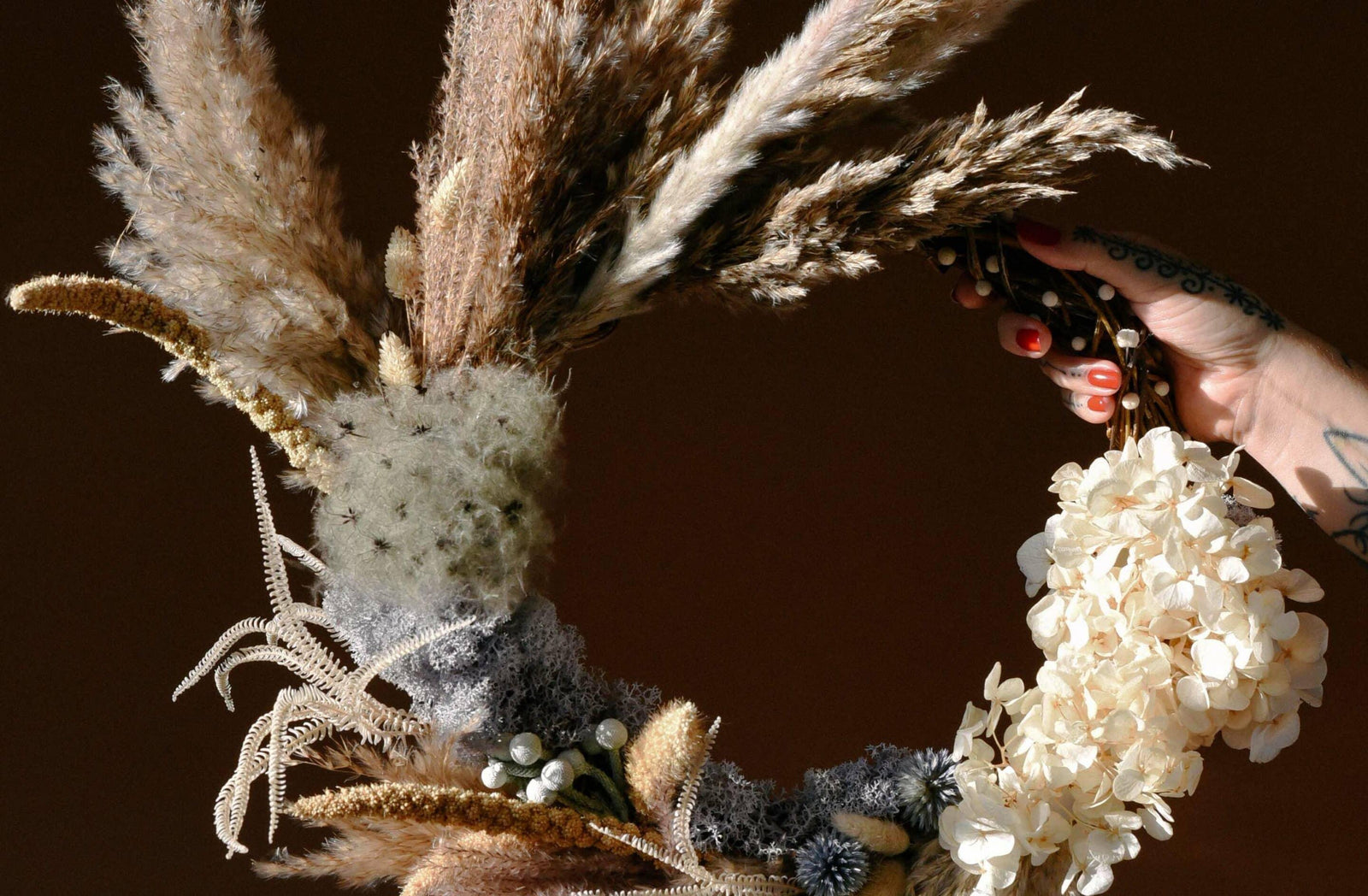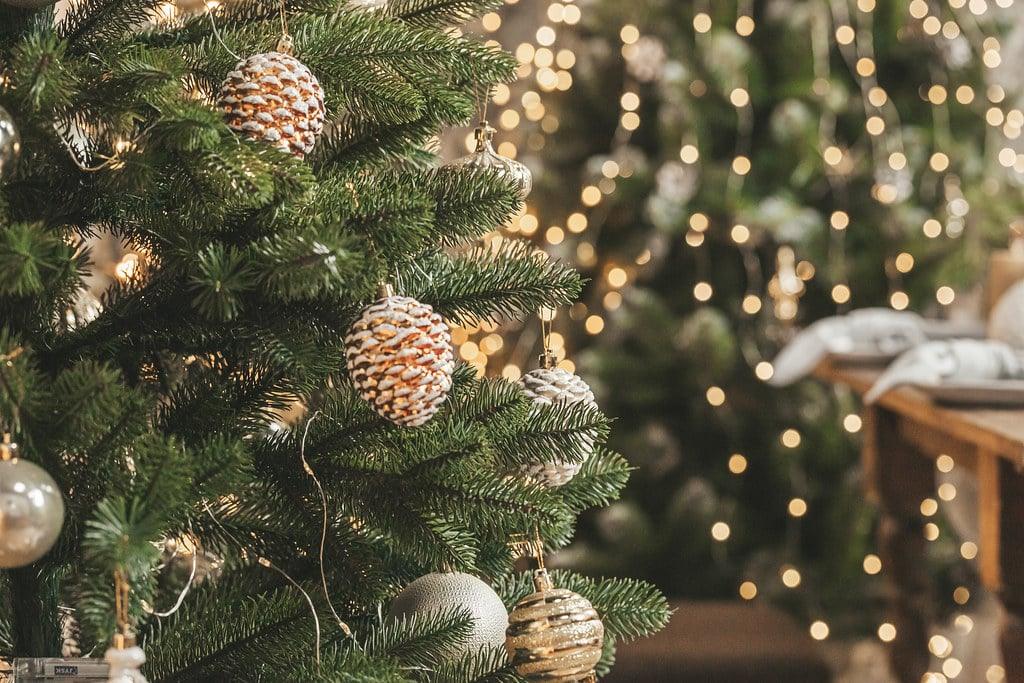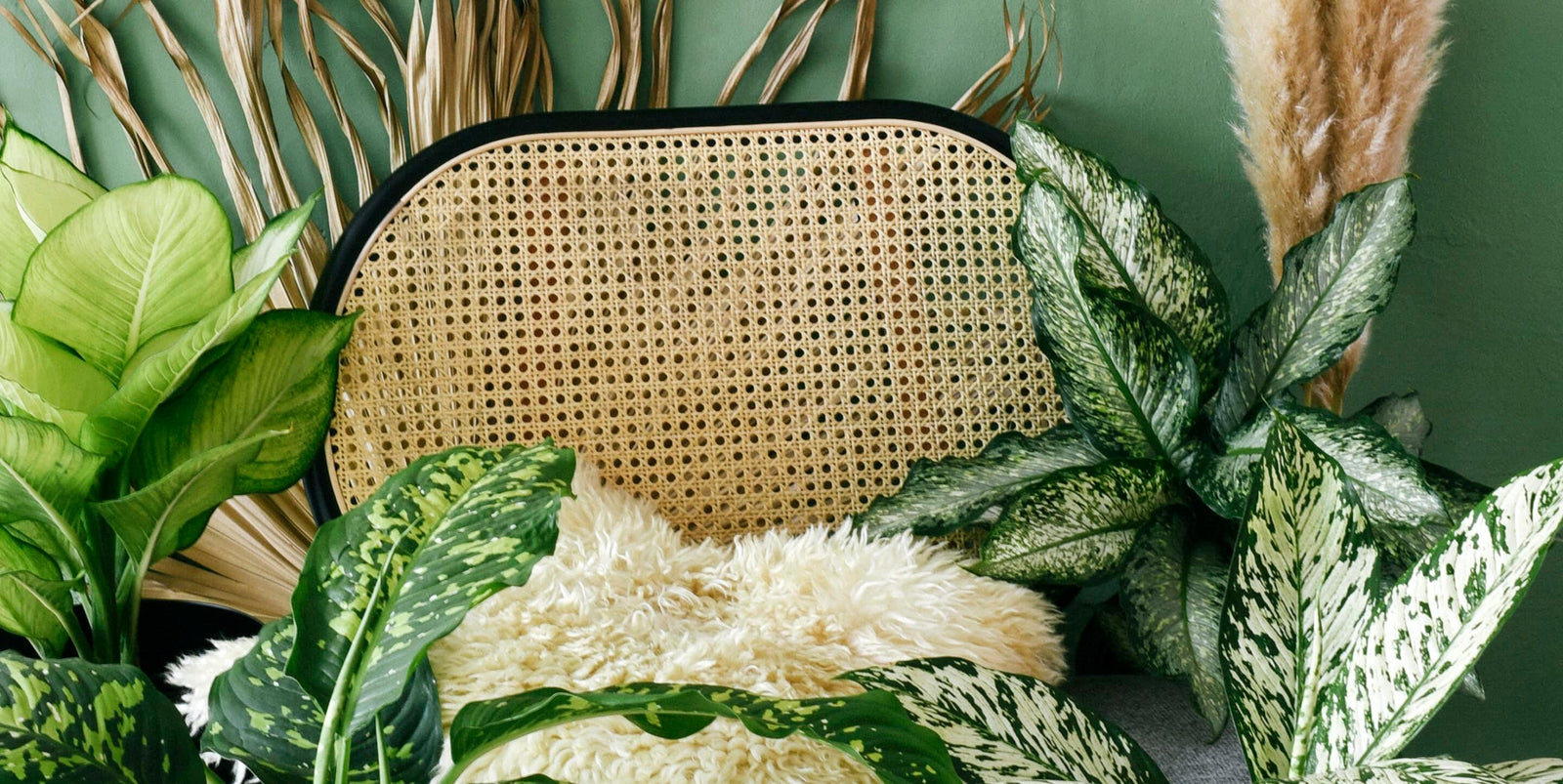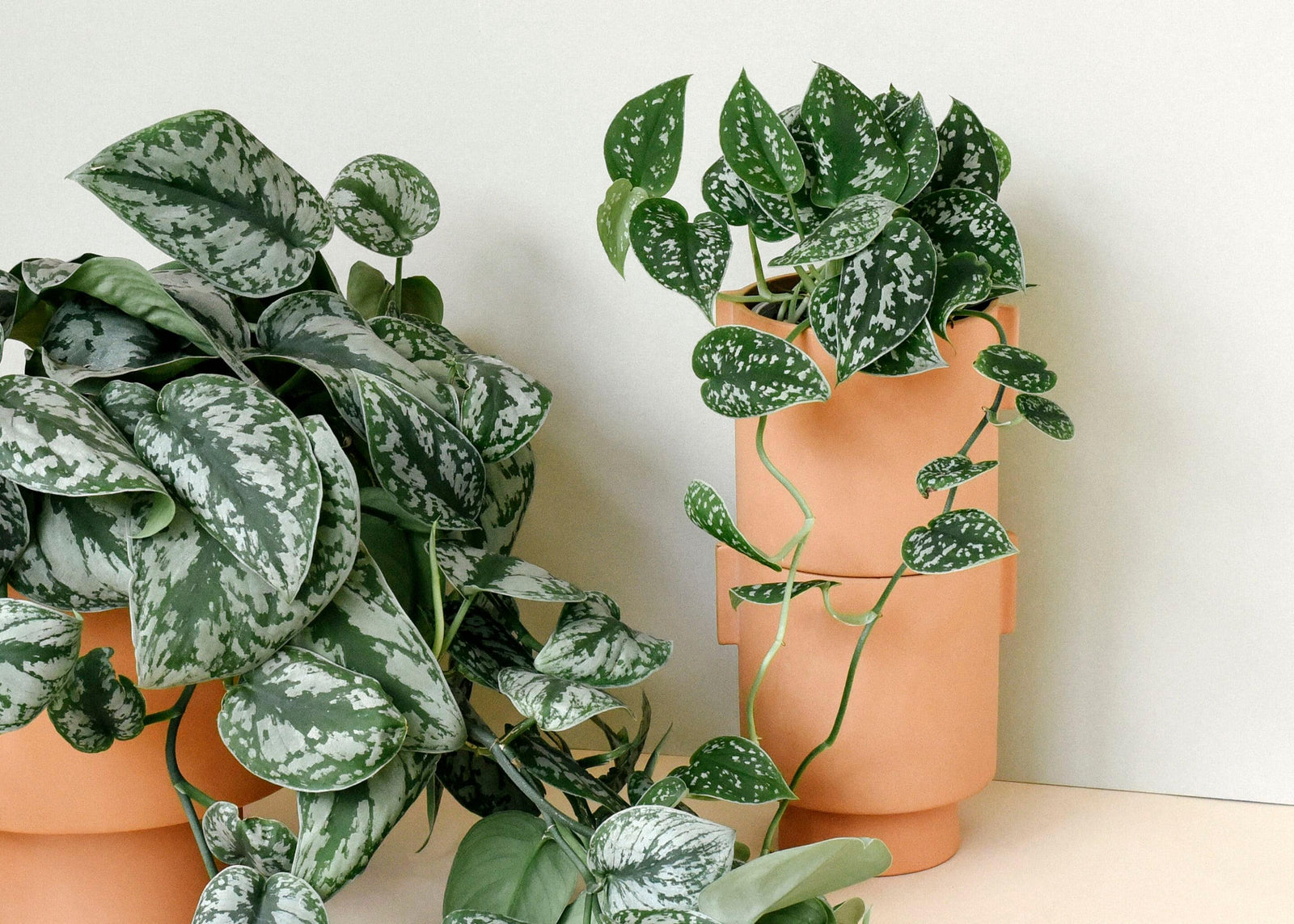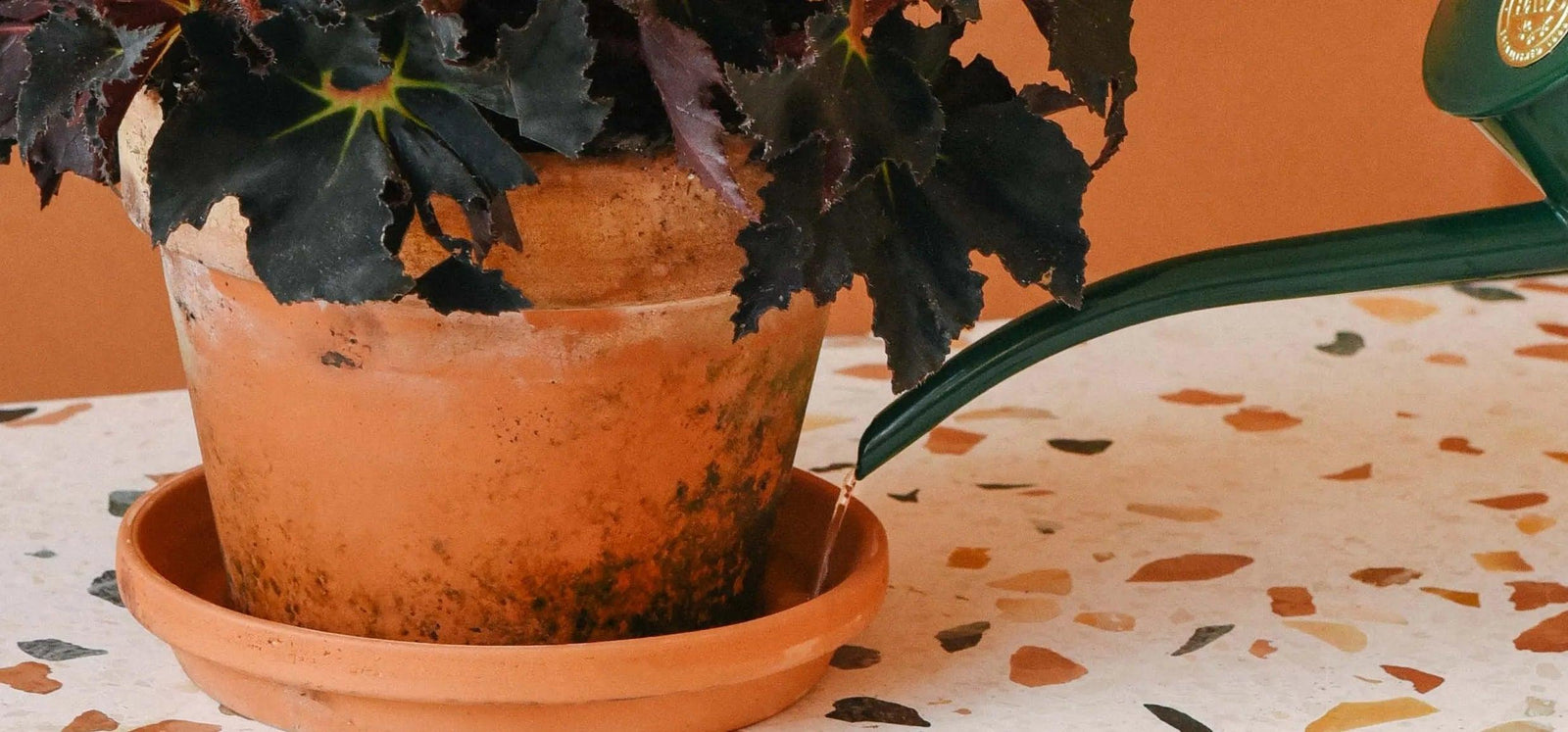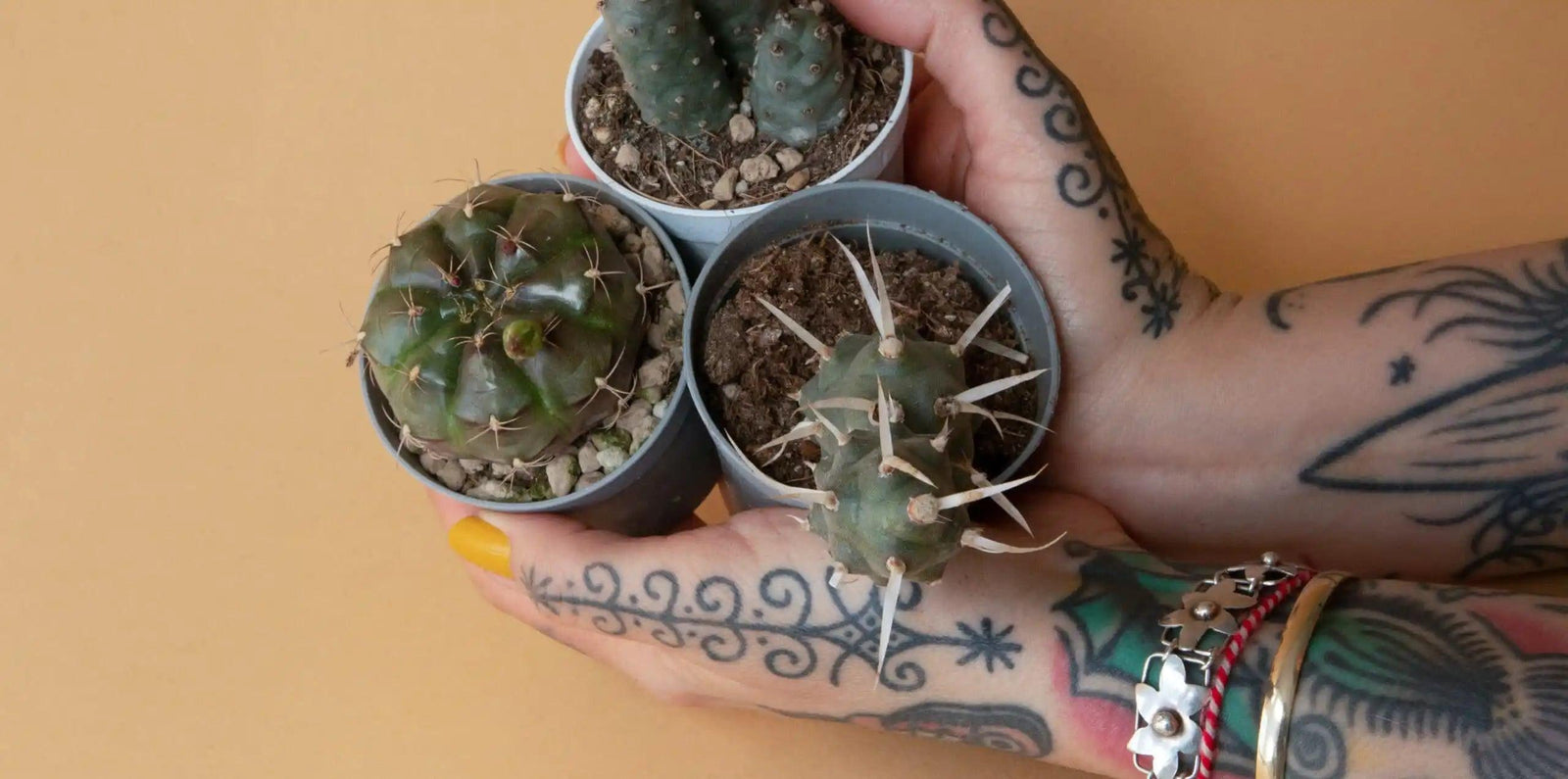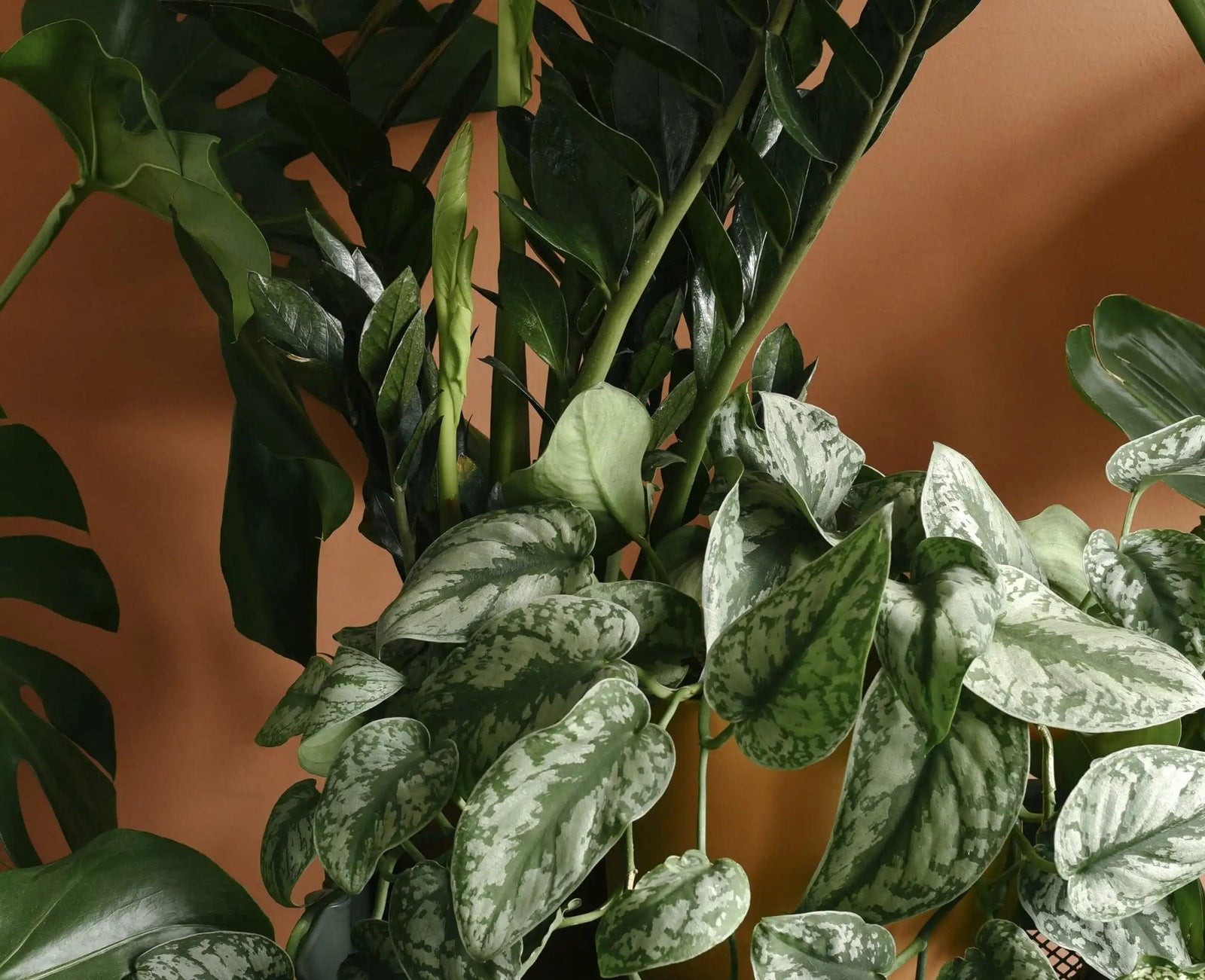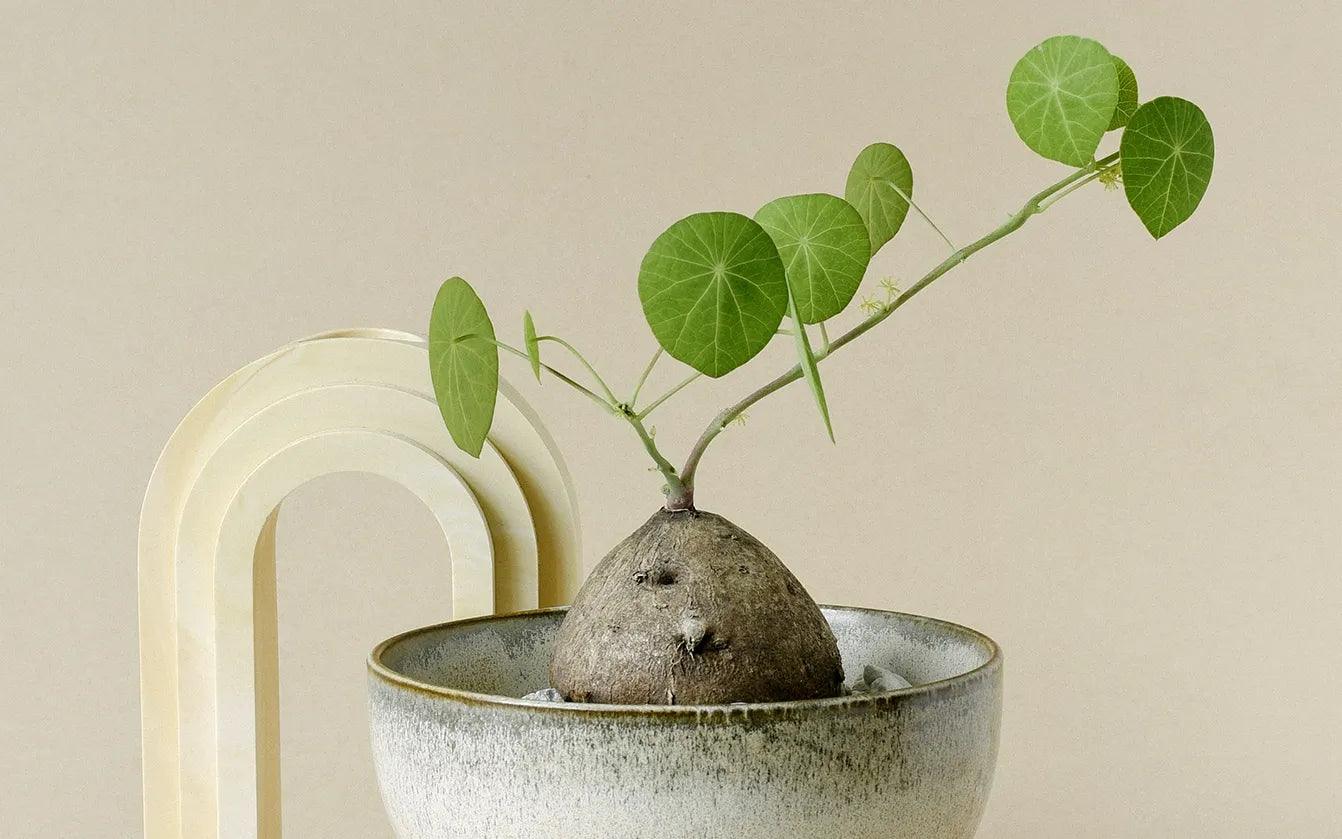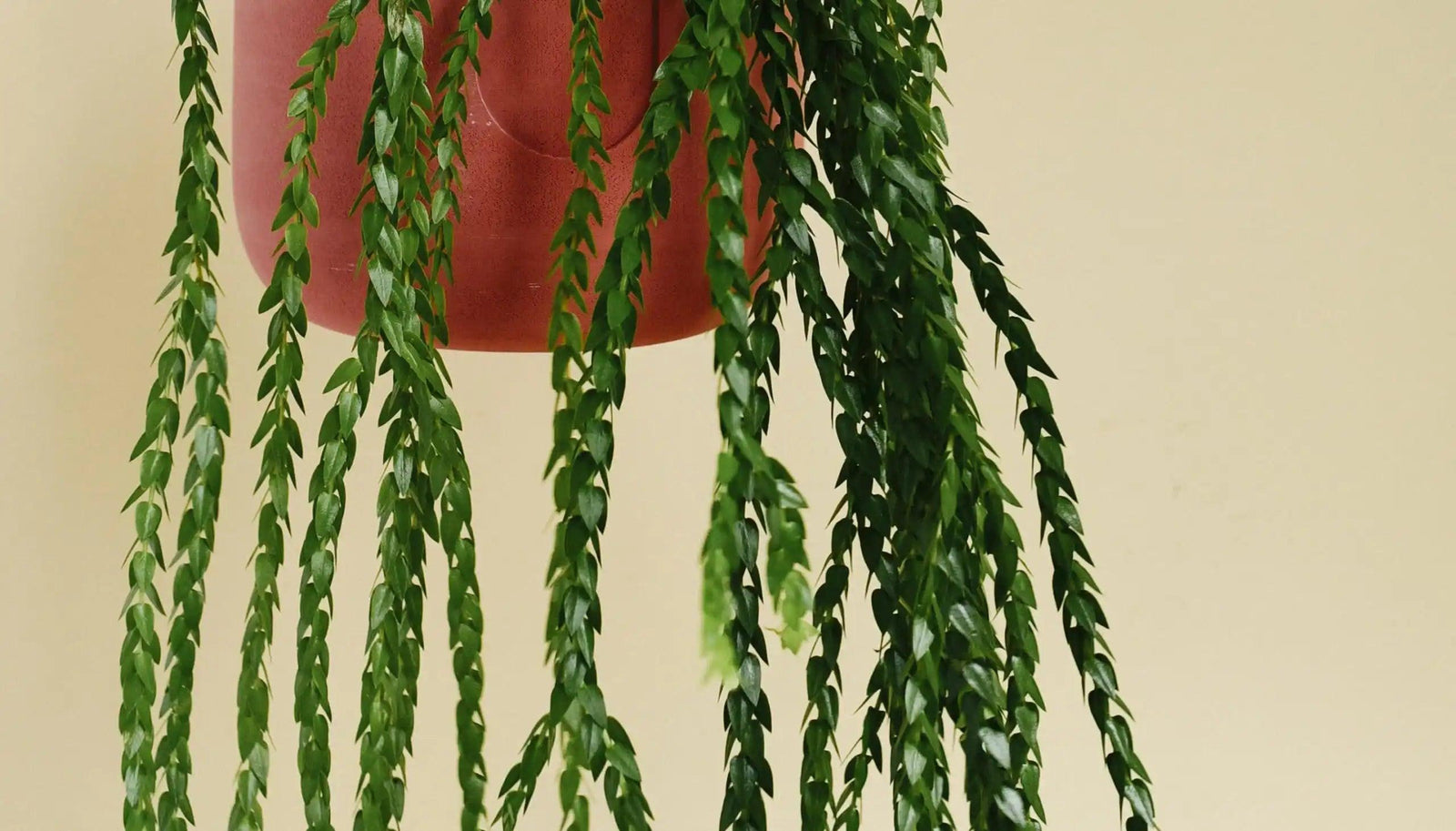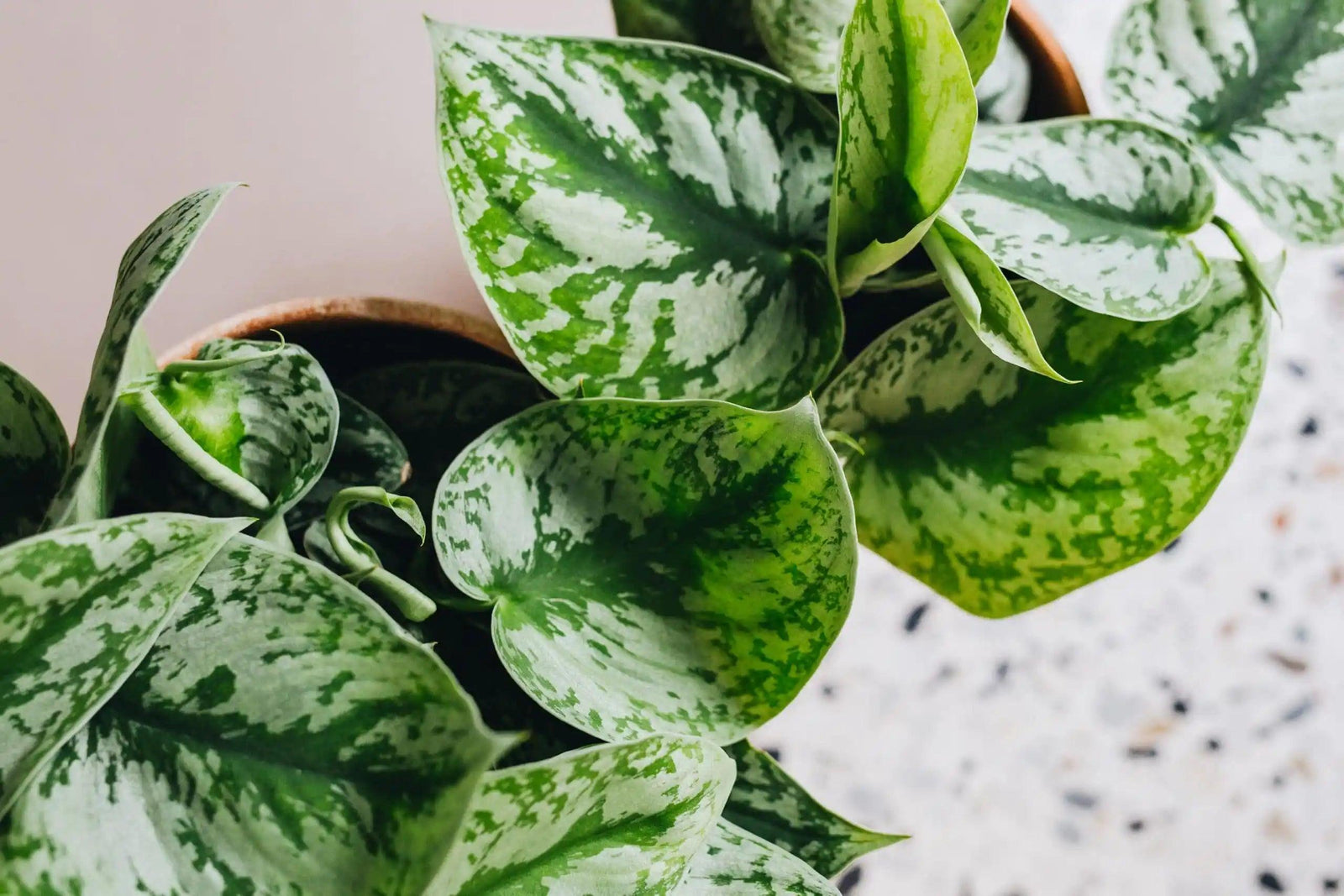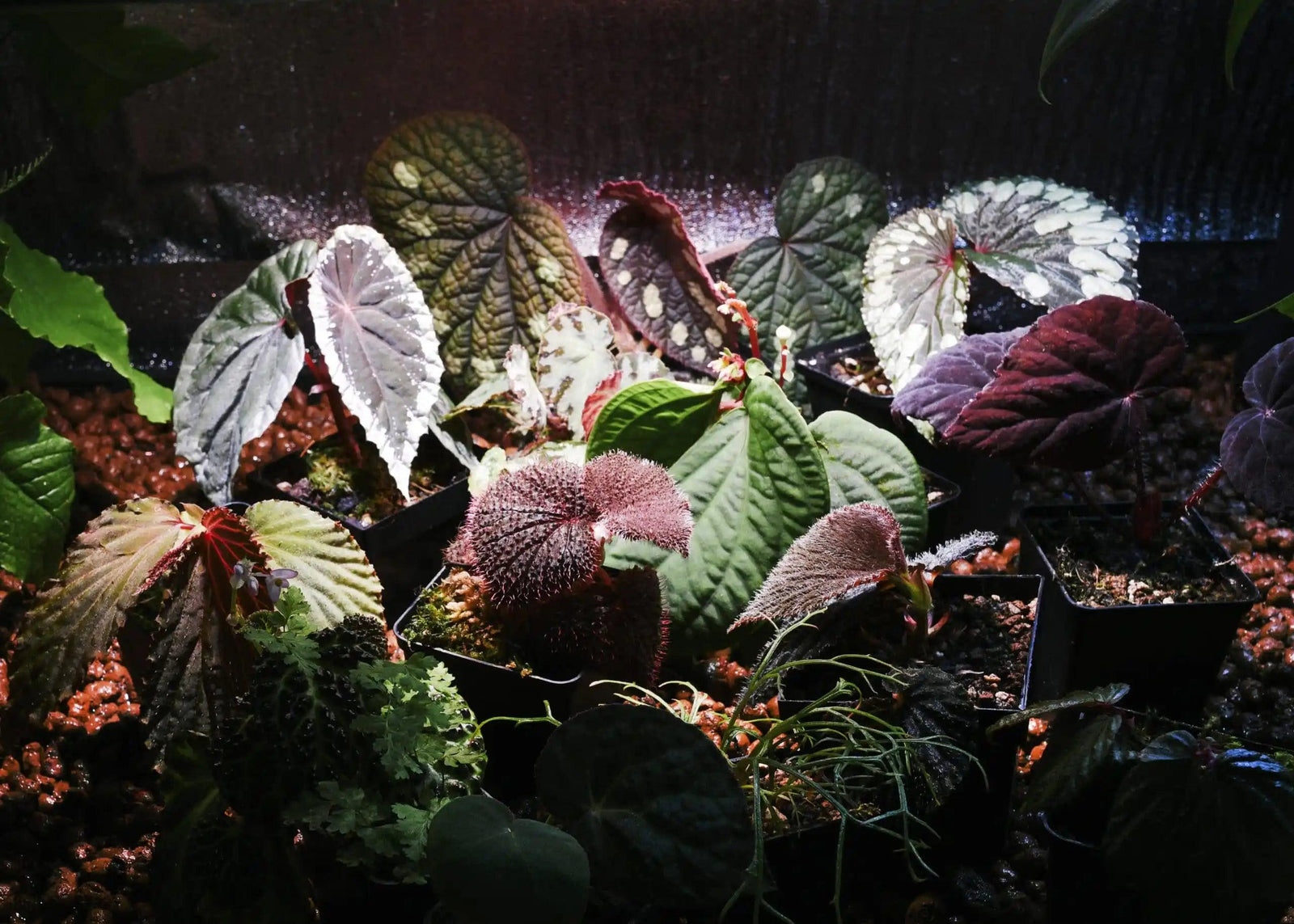Anleitungen – von Plant Circle
Pflanzenprofil: Anthurium
In dieser Einführung zu dieser unglaublich beliebten Zimmerpflanze haben wir Sarah , Mitglied des Plant Circle-Teams und leidenschaftliche Pflanzensammlerin, gebeten, uns ihre besten Anthurien-Pflegetipps zu verraten. Holen Sie sich also einen Kaffee, machen Sie es sich in Ihrem Lieblingssessel bequem und freuen Sie sich darauf, dass Ihnen jede Menge Wissen in den Schoß fällt!
Wenn Sie uns fragen, gehören Anthurien zu den atemberaubendsten Blattpflanzen, die die Welt zu bieten hat! Wer kann ihren unwirklichen Adern oder ihren riesigen samtigen, glänzenden oder gewellten Blättern widerstehen? Wir definitiv nicht! Obwohl viele Menschen sie sammeln und als Zimmerpflanzen züchten, muss man bedenken, dass es sich in erster Linie um Dschungelpflanzen handelt, die ein gewisses Maß an besonderer Pflege benötigen, um zu gedeihen. Aber keine Sorge, wir sind für Sie da! In diesem Beitrag finden Sie alle Informationen, die Sie brauchen, um Ihre eigenen glücklichen und gesunden Anthurien zu züchten.
Aber zunächst ein paar Hintergrundinformationen zu dieser faszinierenden Pflanze! Anthurien sind tatsächlich die größte Gattung der Aronstabgewächse und umfassen etwa tausend Pflanzenarten. Sie kommen in ganz Südmexiko, Mittelamerika und großen Teilen Südamerikas vor, einige Arten kommen auch in der Karibik vor. Aronstabexperten gehen davon aus, dass es noch Hunderte weiterer Anthurienarten gibt, die in den Regenwäldern vieler südamerikanischer Länder, insbesondere Ecuadors und Kolumbiens, noch nicht lokalisiert und beschrieben wurden. Die überwiegende Mehrheit der seltensten und schönsten Anthurienformen findet sich an den Westhängen der Anden. Jedes Jahr dringen Aronstabspezialisten wie Dr. Tom Croat vom Missouri Botanical Garden, der als einer der weltweit führenden Experten für diese Aronstabgattung gilt, mit Unterstützung von Studenten und Forschern tief in den Regenwald vor, um neue Arten zu lokalisieren, zu fotografieren, zu sammeln und zu beschreiben. Er ist auch für die Entdeckung vieler Arten verantwortlich, die die Pflanzenwelt heutzutage so sehr begeistern. Wenn Sie also eine beliebte Anthurie in Ihrer Sammlung haben, haben Sie das wahrscheinlich Dr. Croat zu verdanken! Die Gattung Anthurium ist mittlerweile auch in südasiatischen Ländern zu finden, aber nur, weil Menschen sie in dieser Region kultiviert haben. Ok, nachdem wir nun ein bisschen mehr über die Herkunft der Anthurien wissen, wollen wir uns damit befassen, wie man sie am besten pflegt!
Substrate . Es gibt epiphytische, hemiepiphytische und terrestrische Anthurien, die tendenziell die Art von Wachstumsmedien bevorzugen, die ihren natürlichen Lebensraum am besten widerspiegeln. Einige Anthurien sind in Bezug auf die Umgebung flexibel und können sowohl unter terrestrischen als auch unter epiphytischen Bedingungen gefunden werden. Ein bemerkenswertes Beispiel hierfür ist das beliebte Anthurium Crystallinum . Die meisten Anthurien sind Epiphyten , die in den Baumkronen tropischer Regenwälder heimisch sind. Sie verankern sich mit ihren Wurzeln an Bäumen und holen sich dann Wasser und Nährstoffe aus der Umgebung und nicht durch Parasitenbefall des Baumes.
Epiphytische Anthurien wachsen auf Bäumen und befestigen ihre Wurzeln an der Rinde, das heißt, sie wachsen ohne Erde. Deshalb lieben sie in einem Topf eine sehr luftige Mischung aus etwa 50 % Rinde, 30 % Perlite und 20 % Substrat . Und fügen Sie ruhig etwas Holzkohle hinzu, wegen ihrer antibakteriellen und pilzhemmenden Eigenschaften! Der einzige Grund, warum es sinnvoll ist, der Mischung etwas Substrat beizufügen, besteht darin, dass es die Feuchtigkeit speichert und Ihnen daher die Mühe erspart, Ihre Pflanze jeden Tag gießen zu müssen! Beispiele für epiphytische Anthurien sind Anthurium Clarinervium, Anthurium Veitchii (Königsanthurie), Anthurium Plowmanii und Anthurium Villenaorum.
Hemiepiphytische Anthurien wurzeln im Boden und heften sich dann an eine andere Pflanze, oft einen Baum, um nach oben zu klettern. Da sie im Boden beginnen, gedeihen sie im Vergleich zu Epiphyten besser in Mischungen mit mehr Erde.
Wir empfehlen eine Mischung aus 40 % Rinde, 30 % Perlite und 30 % Substrat mit zusätzlicher Holzkohle. Diese Pflanzen benötigen möglicherweise einen tieferen Topf oder eine Stange zum Festhalten, wenn sie zu klettern beginnen.
Beispiele für hemiepiphytische Anthurien sind Anthurium Warocqueanum , Anthurium Marmoratum und Anthurium Metallicum.
Terrestrische Anthurien wachsen auf dem Boden des Regenwalds und vertragen daher eine etwas weniger luftige Mischung. Wir empfehlen 1/3 Rinde, 1/3 Perlite und 1/3 Substrat.
Sie werden auch eine Deckschicht aus lebendem Moos lieben, die ihre Wurzeln und Stängel bedeckt!
Beispiele für terrestrische Anthurien sind Anthurium Magnificum, Anthurium Dressleri, Anthurium Besseae, Anthurium Papilillaminum und Anthurium Queremalense sowie fast alle Anthurien mit Kieselblättern, wie Anthurium Luxurians, Anthurium Radicans, Anthurium Corrugatum und Anthurium Clidemioides.
Die meisten Anthurien gedeihen auch hervorragend in Semi-Hydrokulturen wie PON oder Leca. Ihre dicken Wurzeln lieben die luftige Mischung und sie sind auch nicht so anfällig für ständige Feuchtigkeit wie manche Pflanzen mit dünneren Wurzeln.
Bei Wurzelfäule empfehlen wir, den verbleibenden Stumpf in Spaghnummoos zu pflanzen, das Sie stets feucht, aber nicht nass halten müssen. Anthurien lieben es, neue Wurzeln in Spaghnummoos wachsen zu lassen! Sie können Ihre Anthurien auch generell in diesem Moos halten, dies wird jedoch nur Leuten empfohlen, die ihre Pflanzen täglich kontrollieren, da es recht schnell austrocknen kann und ständiger Beobachtung bedarf.
Profi-Tipp: Verwenden Sie lebendes Moos! Anthurien schätzen eine Schicht Moos auf der Blumenerde sehr. Diese Schicht sollte den oberen Teil des Stängels bedecken, damit die Pflanze ihre neuen Wurzeln hineinwachsen lassen kann. Obwohl Spaghnummoos gut funktioniert, ist lebendes Moos, beispielsweise Polstermoos , idealer, da es eine natürliche Symbiose mit Ihrer Anthurie eingeht und ihr nicht nur zusätzlichen Halt gibt, sondern auch Feuchtigkeit, da es nah an den Blättern wächst, und es hilft der Pflanze, zusätzliches Wasser im Boden zu speichern. Es sieht außerdem viel hübscher aus als Spaghnummoos und lässt Ihre Anthurie aussehen, als würde sie auf dem Waldboden wachsen. Eine zusätzliche Moosschicht fördert außerdem sowohl das Wurzel- als auch das Blattwachstum!
Licht . Anthurien leben im Unterholz der südamerikanischen Regenwälder und sind daher an eher schwache Lichtverhältnisse gewöhnt. Besonders die Arten mit einer violetten bis roten Unterseite haben sich an ihre stark schattigen Umgebungen angepasst. Untersuchungen haben gezeigt, dass die Färbung auf der Blattunterseite dazu dient, eine erhebliche Menge Licht, das bereits durch die obere Blattoberfläche gelangt ist, zurück in das Blatt zu reflektieren, wo es absorbiert wird. Das bedeutet, dass diese Pflanzen einen genialen Weg gefunden haben, Licht durch Reabsorption effektiver zu absorbieren! Es muss jedoch gesagt werden, dass schwache Lichtverhältnisse in einem Regenwald immer noch heller sein können als die dunklen Ecken unserer Häuser, und obwohl einige Anthurien definitiv dort gehalten werden können, werden sie auf keinen Fall viel wachsen oder gedeihen. Wenn Sie ihnen mindestens mittelhelles Licht geben, können sie ein glücklicheres Leben in Ihrem Zuhause führen! Kostbare, samtige Anthurienblätter bekommen schnell einen Sonnenbrand, halten Sie also einen ausreichenden Abstand zu Wachstumslampen und gewöhnen Sie sie an das Licht, wenn Sie sie zuvor in einer schwachen Lichtumgebung hatten.
Viele Sammler halten ihre Anthurien in dem mittlerweile berühmten IKEA-Gewächshausschrank mit Pflanzenlampen. Unserer Erfahrung nach reichen ein 30-Watt-LED-Streifen oben und ein weiterer in der Mitte des Schranks völlig aus, um Ihre Anthurien in dieser besonderen Umgebung in kürzester Zeit wachsen zu lassen!
Luftfeuchtigkeit . Wenn es um Anthurien geht, wird die Diskussion in den Foren richtig heiß! Viele Leute sagen, dass man Anthurien nur bei hoher Luftfeuchtigkeit züchten kann. Wenn Sie ihnen also keine Luftfeuchtigkeit von über 70 % bieten können, sollten Sie sie gar nicht erst sammeln. Wir möchten Ihnen jedoch mitteilen, dass dies nicht ganz richtig ist! Es stimmt zwar, dass Anthurien technisch gesehen keine Zimmerpflanzen sind und nicht als solche gezüchtet werden können, aber es gibt einige Sorten, die bei einer Luftfeuchtigkeit von 40 % oder weniger problemlos wachsen! Anthurien mit glänzenden Blättern sind im Allgemeinen anspruchsloser, was die Luftfeuchtigkeit angeht. Anthurium Browniii, Plowmanii usw. wachsen und gedeihen problemlos in Ihrem Zuhause! Samtige Anthurien sind in der Regel etwas anspruchsvoller, aber manche Arten sind anspruchsvoller als andere. Unsere beliebte Anthurium Clarinervium zum Beispiel ist so weit verbreitet, weil sie sich hervorragend als Zimmerpflanze eignet. Sie kommt mit einer Luftfeuchtigkeit von 50 % zurecht, was zufällig die Luftfeuchtigkeit ist, die Sie in Ihrem Zuhause ohnehin anstreben sollten, denn sie ist auch für Menschen ideal! Andere samtblättrige Anthurien gedeihen bei einer Luftfeuchtigkeit von idealerweise 65–80 %. Wenn Sie ihnen die benötigte Luftfeuchtigkeit bieten, stellen Sie sicher, dass Ihre Blätter nicht knusprig werden oder ihr Wachstum verkümmert. Viele unserer schönen samtigen Lieblinge können jedoch an ein Leben in niedrigerer Luftfeuchtigkeit gewöhnt werden. Dies ist ein zeit- und pflegeintensiver Prozess, da Sie die Luftfeuchtigkeit nur nach und nach senken sollten, damit sie sich an die Veränderung gewöhnen, aber schließlich können sie in Umgebungen mit 50 % Luftfeuchtigkeit leben. Wir haben dies erfolgreich mit Anthurium Besseae und Anthurium Papilillaminum x hybrid getan! Einige Anthurien verwelken jedoch innerhalb weniger Stunden, wenn ihnen nicht die richtige Luftfeuchtigkeit geboten wird. Diese kommen leider als normale Zimmerpflanzen nicht in Frage und benötigen ein Terrarium oder eine Gewächshausumgebung. Insbesondere die Anthurien mit Kieselblättern und gewelltem Blatt gehören in diese Kategorie. Ein Paradebeispiel ist die Anthurium Splendidum, eine der schönsten Arten überhaupt, die nur bei einer Luftfeuchtigkeit von über 85 % gedeiht und nichts Geringeres verträgt. Eine bemerkenswerte Ausnahme von dieser Regel ist vielleicht die Hybride Anthurium Luxurians x Dressleri, die bei richtiger Eingewöhnung unter normalen Raumbedingungen sehr gut gedeiht.
Viele Menschen züchten Anthurien in Gewächshäusern, Zuchtzelten oder Gewächshausschränken, um eine hohe Luftfeuchtigkeit zu gewährleisten.
Allerdings sind diese Pflanzen recht anfällig für Pilzbefall, daher ist es sehr wichtig, für eine ausreichende Belüftung zu sorgen und ihre Umgebung regelmäßig zu reinigen.
Aber dazu kommen wir im Abschnitt Schädlinge und Krankheiten!
Düngen . Viele Anthurien wachsen wie verrückt, wenn sie regelmäßig gedüngt werden. Langzeitdünger, der in die Erde gemischt wird, kann bei ihnen wahre Wunder bewirken. Aber auch Ihr persönlicher Lieblingsdünger, der auch flüssig sein kann, tut seinen Zweck! In einem Gewächshaus können Sie sie das ganze Jahr über düngen, denn genau wie in den Regenwäldern, aus denen sie stammen, gibt es dort keine jahreszeitlichen Unterschiede!
Umtopfen . Anthurien lieben es, Platz für ihre Wurzeln zu haben. Sie schätzen daher Töpfe, die größer sind als ihr Wurzelballen, und normalerweise ein oder zwei Größen größer als bei Ihren anderen Zimmerpflanzen. Sie belohnen Sie dafür, dass Sie ihnen mehr Platz geben, indem sie größere Blätter bekommen!
Schädlinge und Krankheiten . Anthurien sind nicht so anfällig für Schädlinge wie viele andere Zimmerpflanzen. Wenn sie jedoch gestresst sind, können sie von Spinnmilben, Thripsen und anderen häufigen Zimmerpflanzenschädlingen befallen werden. Deshalb ist es wichtig, Ihre Anthurien so weit wie möglich in Ruhe zu lassen, anstatt sie ständig umzutopfen und zu beschneiden oder ihre Umgebung zu verändern. Dadurch wird Ihre Pflanze nur schwächer und für Schädlinge attraktiver! Die häufigsten Probleme bei Anthurien sind Bakterien- und Pilzkrankheiten, darunter Bakterienbrand, Wurzelfäule, Stammfäule und Pilz- oder bakterielle Blattflecken. Bakterien und Pilze gedeihen unter denselben Bedingungen mit hoher Luftfeuchtigkeit, die auch Ihre Anthurien lieben, und deshalb ist es notwendig, in Ihrem Zuhause oder Gewächshaus für eine gute Luftzirkulation zu sorgen, da bewegte Luft es Pilzen oder Bakterien viel schwerer macht, sich auf Blättern niederzulassen! Wenn Sie gelbe Flecken auf den Blättern Ihrer Anthurie sehen, oft mit einem kleinen braunen Fleck in der Mitte, oder wenn große Teile Ihres Blattes braun und knusprig werden und einen gelben Hof darum haben, liegt wahrscheinlich ein Bakterien- oder Pilzproblem vor. Der erste Notfallschritt besteht darin, die betroffene Pflanze vom Rest Ihrer Pflanzen zu trennen, da sich Bakterien und Pilze schnell ausbreiten können. Wir empfehlen dringend, alle Blätter, die Anzeichen von Bakterien oder Pilzen aufweisen, abzuschneiden und sofort zu entsorgen. Wir wissen, dass dies ein sehr entmutigender Prozess ist und Sie möglicherweise nichts weiter als einen Stumpf übrig haben, wenn alle Blätter betroffen sind. Wenn Sie also zunächst alternative Methoden ausprobieren möchten, empfehlen wir ein Fungizid mit Kupfer oder ein systemisches Fungizid, das den Befall Ihrer Pflanze stoppen kann. Es wird die Flecken nicht entfernen, aber es wird die Ausbreitung des Pilzes verhindern. Was bei einer bakteriellen Infektion bei Menschen hilft, hilft auch bei Ihren Pflanzen … ob Sie es glauben oder nicht, wir sprechen hier von Mundwasser! Sprühen Sie etwas antiseptisches Mundwasser direkt auf die betroffene Stelle der Anthurie und lassen Sie es fünf Minuten einwirken. Entfernen Sie dann vorsichtig die restliche Flüssigkeit mit einem Tuch vom Blatt. Sie können Ihre Anthurien auch einmal pro Woche besprühen, um Insektenbefall vorzubeugen. Verwenden Sie jedoch nur die geschmacksneutrale oder goldene Version des Mundwassers, da die aromatisierten Versionen zusätzliche Zusatzstoffe enthalten, die für die Gesundheit Ihrer Pflanzen schädlich sein können.
Vermehrung. Anthurien können durch Stammstecklinge und Bestäubung vermehrt werden, aber die Beschreibung dieser Prozesse würde einen eigenen Blogbeitrag erfordern, also bleiben Sie dran für einen zukünftigen Beitrag darüber!
Wir hoffen, dass dieser Beitrag Sie dazu inspiriert hat, die spannende Aufgabe der Anthurien-Pflanzenhaltung in Angriff zu nehmen. Ganz gleich, ob Sie sich für ein Gewächshaus oder ein Zuchtzelt entscheiden oder einfach versuchen möchten, eines auf die Fensterbank neben Ihre gewöhnlicheren Zimmerpflanzen zu stellen: Sie verfügen nun über alle erforderlichen Kenntnisse, um die Anthurien Ihrer Wahl gedeihen zu lassen!





